Bonjour Québec! We continued along the tryingly long dirt road from Labrador, and to be honest, we were about done with it, ready for our road trip through Quebec. We ‘hammered down’ at 60 kilometres per hour, prioritizing the fact that fromage, vin and café were in our near future.
The last time we were in a non-English speaking region was Argentina, and we were eager to practice the one French phrase that we actually remembered from grade school – je parle mal français. To be honest, the only French phrase we actually remembered involved asking to be excused to use the toilet. Helpful.
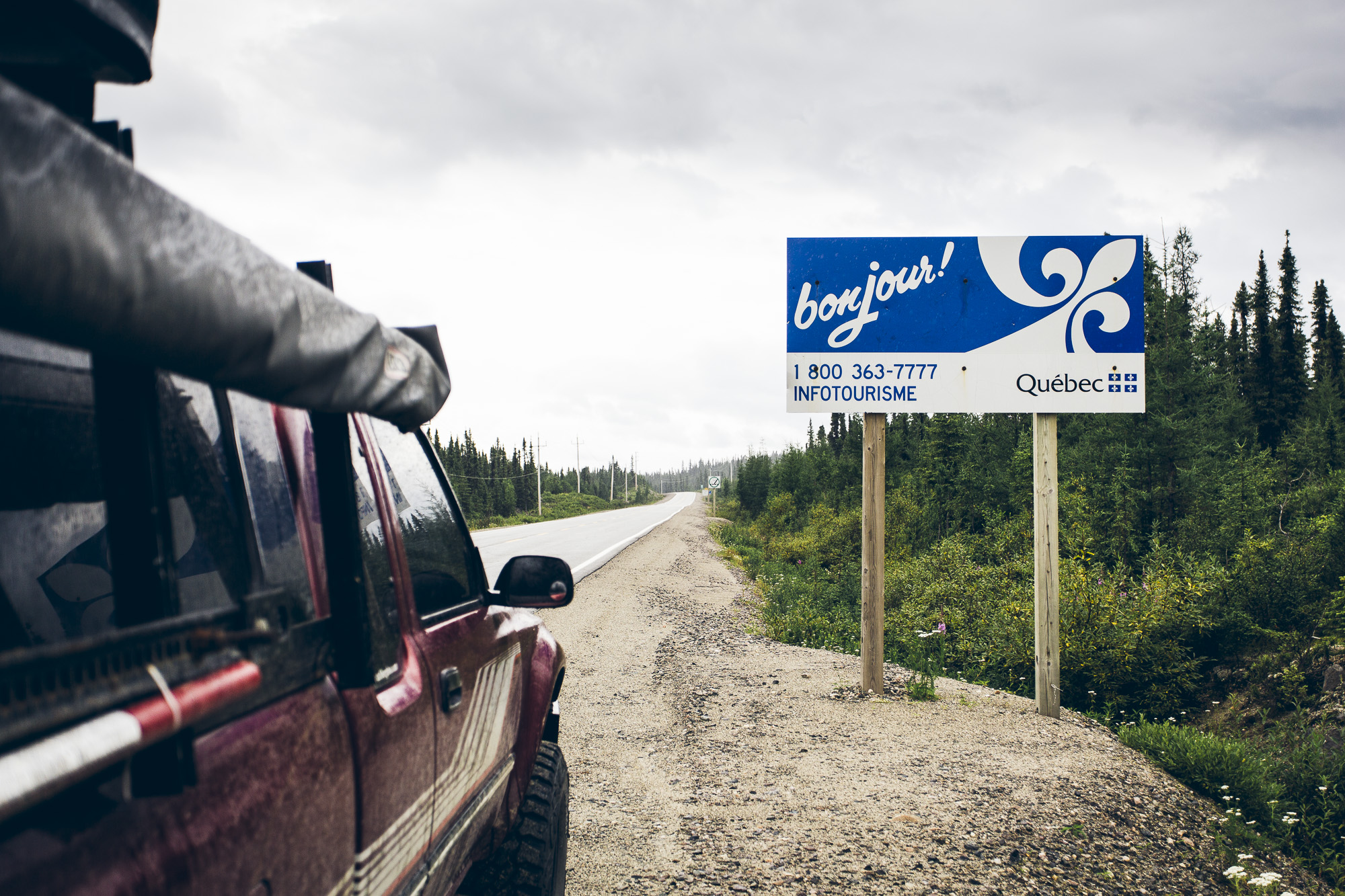
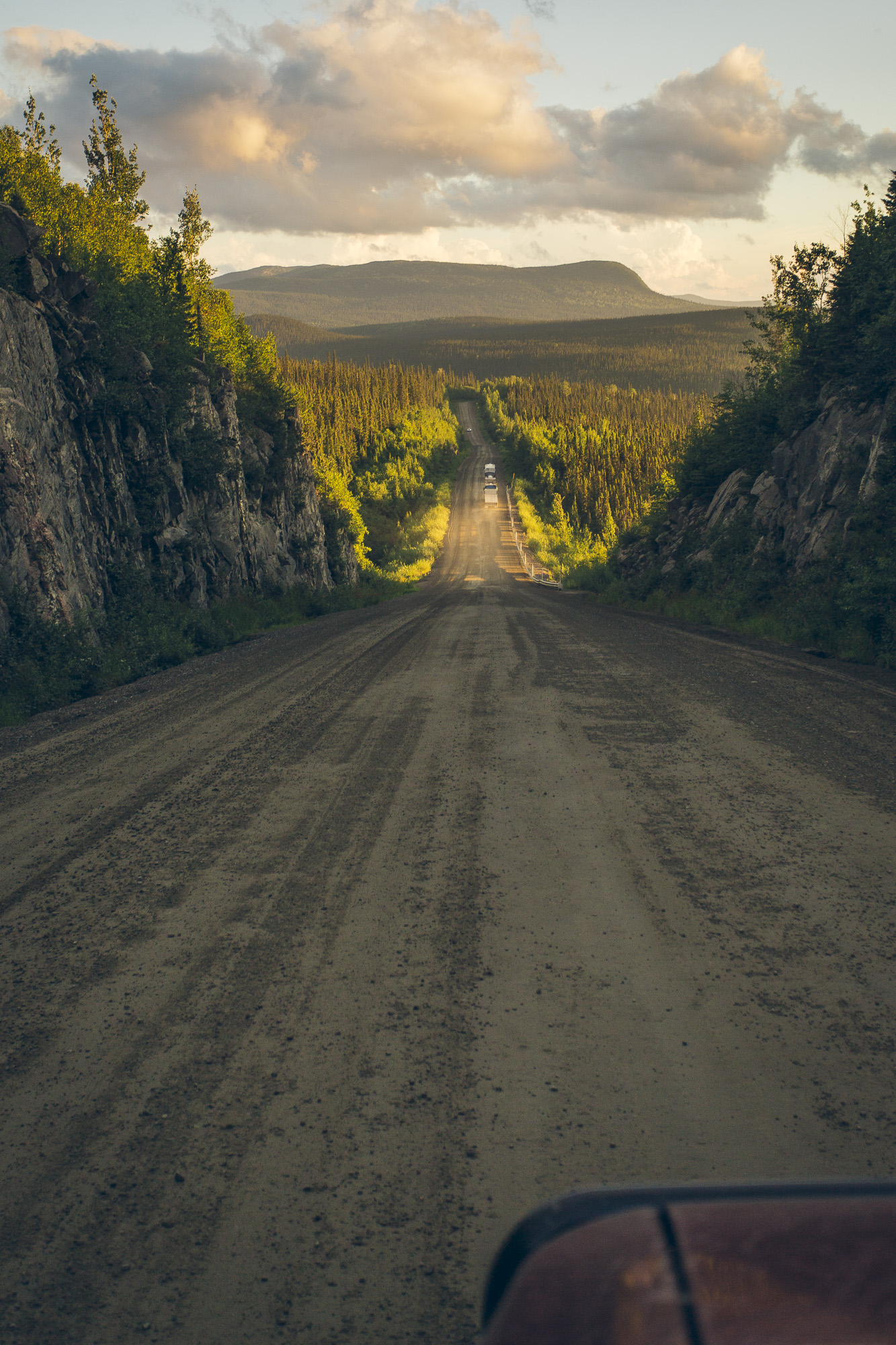
We were celebrating Richard’s birthday and had some special plans lined up.
As a young girl, I went on summer road trips around British Columbia with my mom, dad and brother. Now, the details of these trips are pretty fuzzy all these years later, but one thing I remember very clearly was the incorporation of a dam and generating station visit into nearly every road trip itinerary. My father is a Civil Engineer, so colossal structures designed by man (or woman) and constructed from concrete (NOT CEMENT! I was reminded often) really piqued his interest. I have no interest, intellect or talent relating to anything in the engineering field, so why dam visits with my family are etched into my long-term memory will remain one of life’s great mysteries.
We were approaching a dam whose unique design (as described by Hydro Québec) is a “true monument to Québec engineering.” The Daniel-Johnson dam’s claim to fame as the highest multiple-arch-and-buttress hydroelectric dam in the world convinced us to stop and check it out.
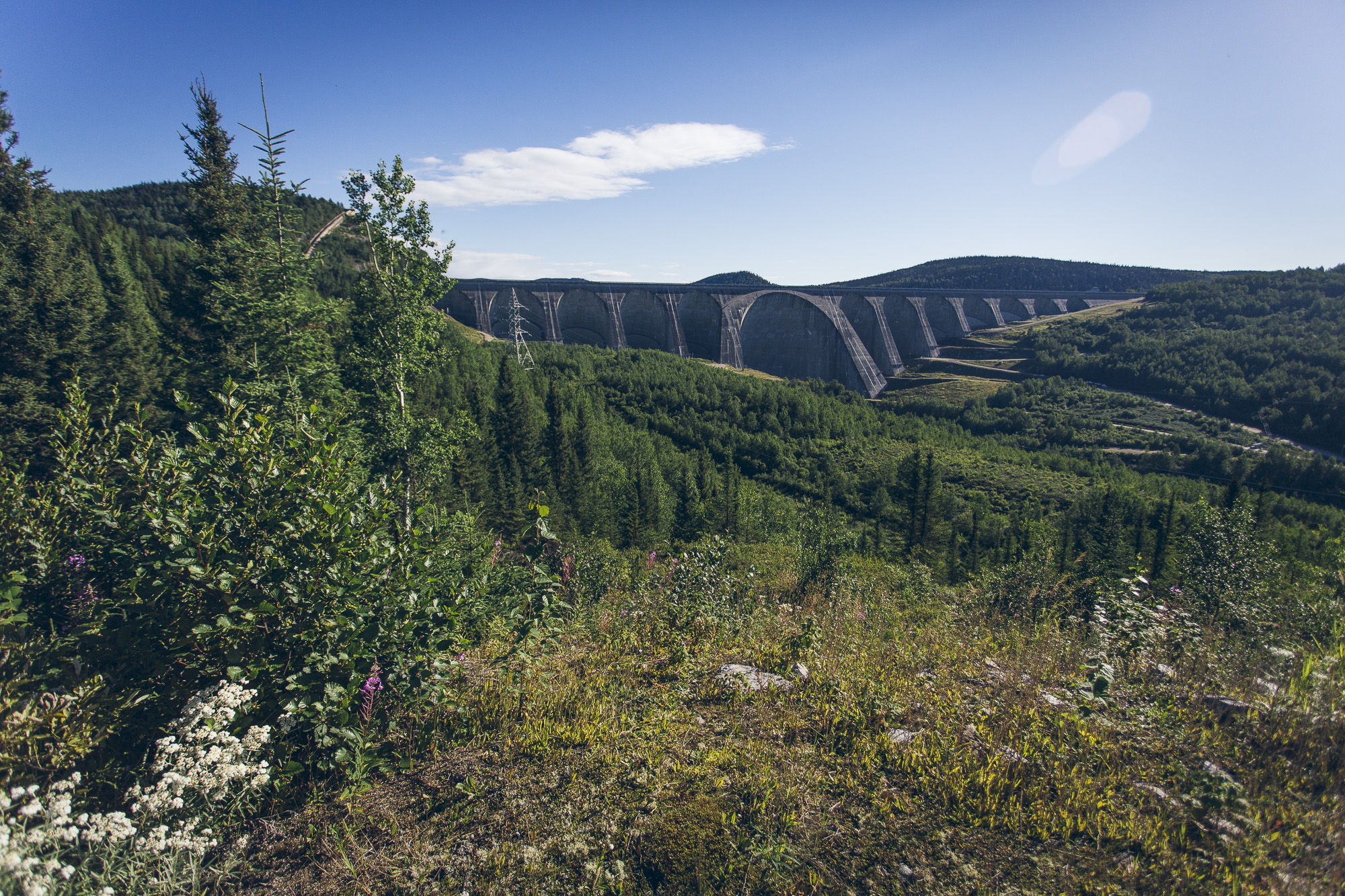
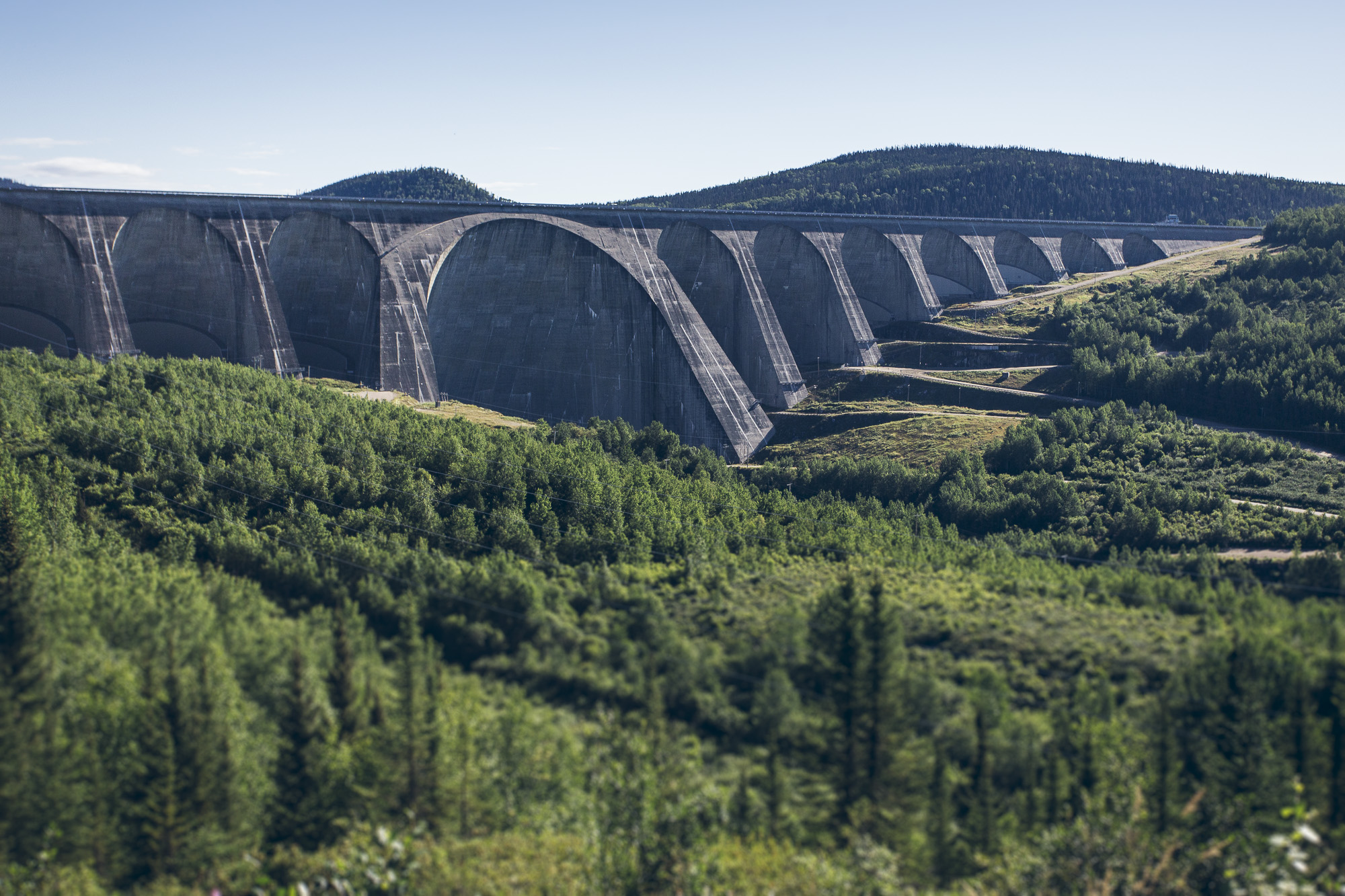
Formerly known as the Manic-5 dam, the Daniel-Johnson Dam and Manic-5 generating station spans the Manicouagan valley located in the Côte-Nord (Northern Coastal) region of Québec. The Manicouagan valley (which is actually a crater) was formed by an asteroid that smashed into the Earth’s crust 214 million years ago.
Constructed between 1959 and 1970, the dam is 214 m (702 ft) tall, 1,314 m (4,311 ft) long and contains 2,200,000 m3 of concrete. To put that into perspective, if you took all the concrete used to build the Daniel-Johnson dam, you could construct a sidewalk from the North Pole to the South.
Hydro Quebec offers free 2-hour guided tours. Their website has the most up-to-date information and seasonal schedules. Tours are offered in French but English audioguides are available. The lobby also has a fairly decent museum that will keep you busy before the tour starts.
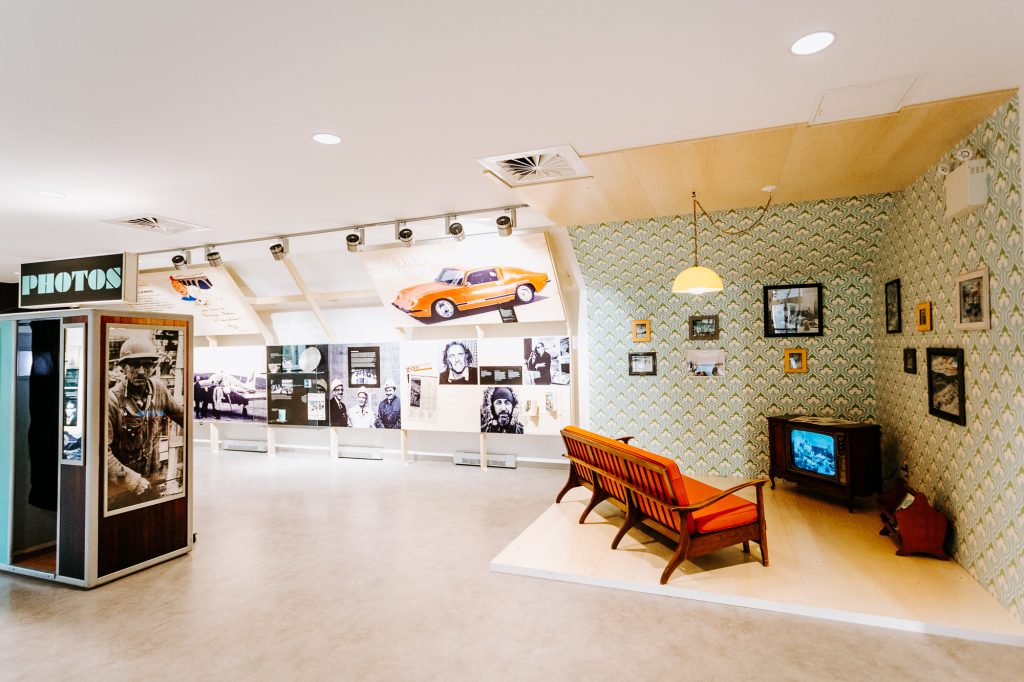
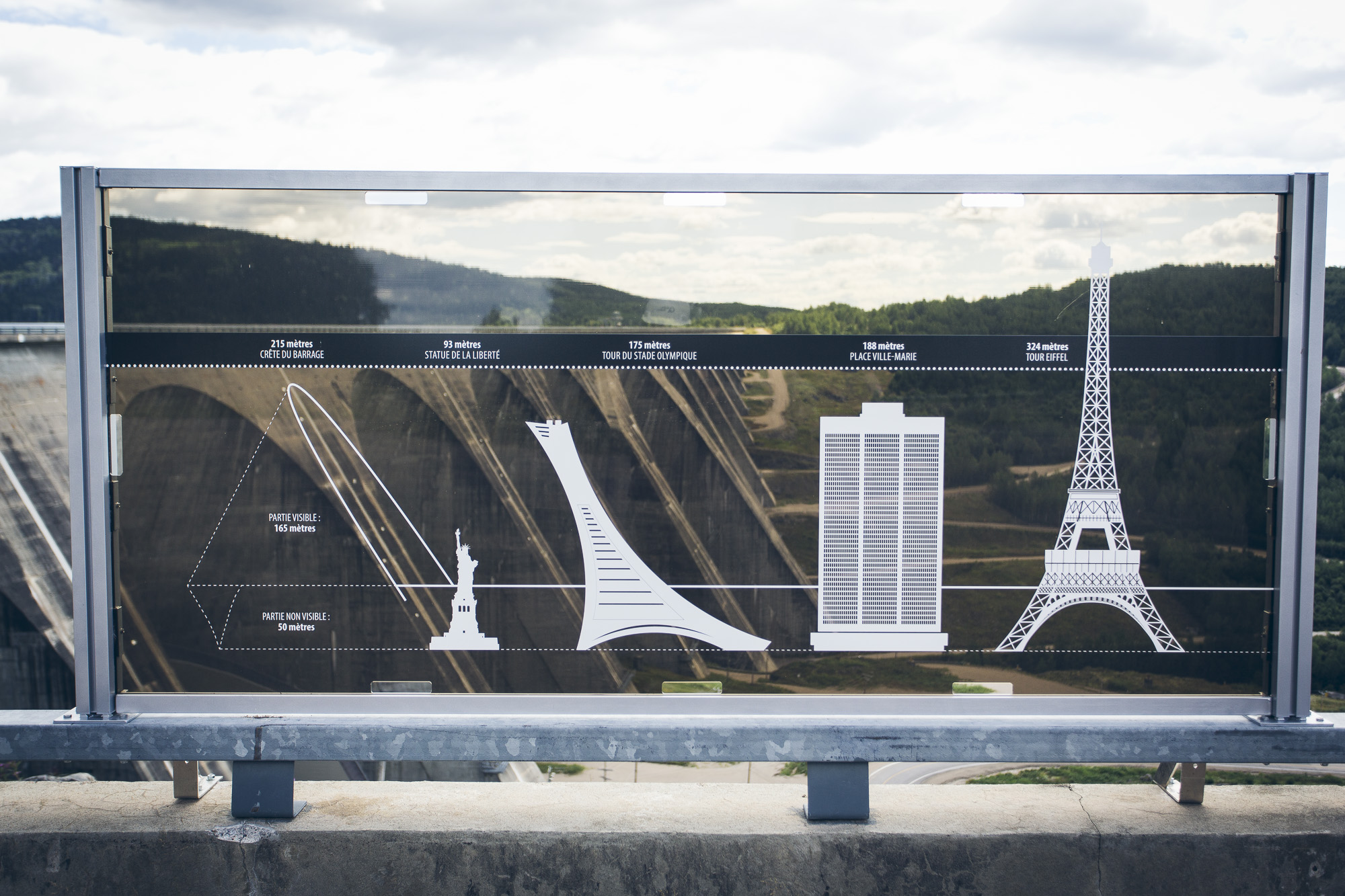
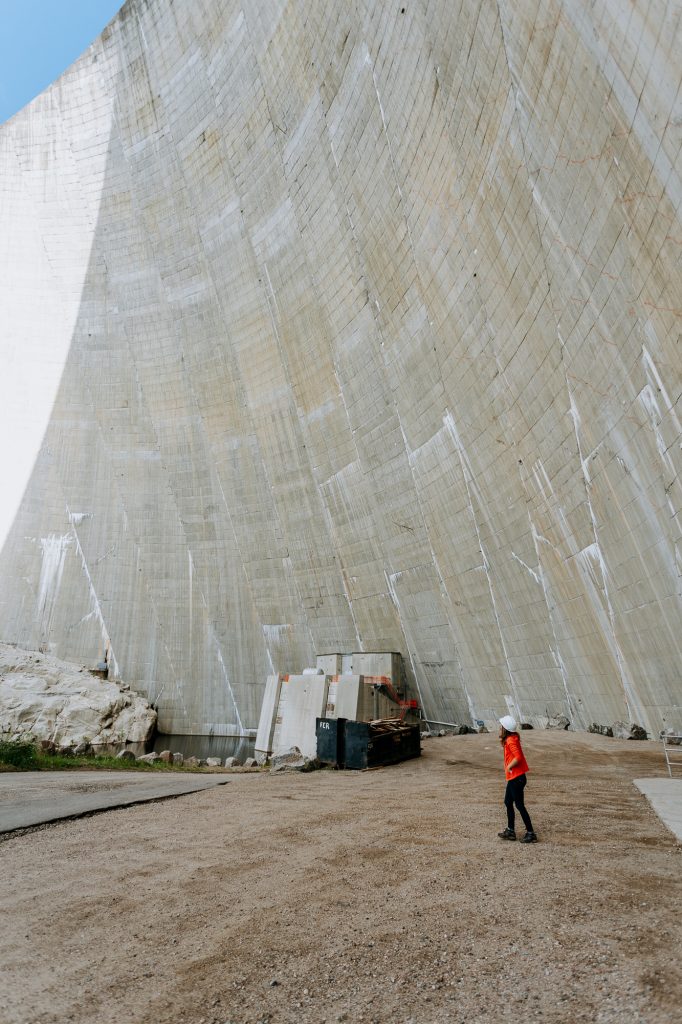

We found a free camp spot with decent views of the dam. It was fairly busy with campers as it was the middle of summer, but we stayed anyway and enjoyed the show.

After a three hour drive via Route 389, our first stop back in civilization was Baie-Comeau, a quaint town located on the St. Lawrence River. A tasty brew and bite at Macrobasserie St. Pancrace made for the perfect lunch stop.
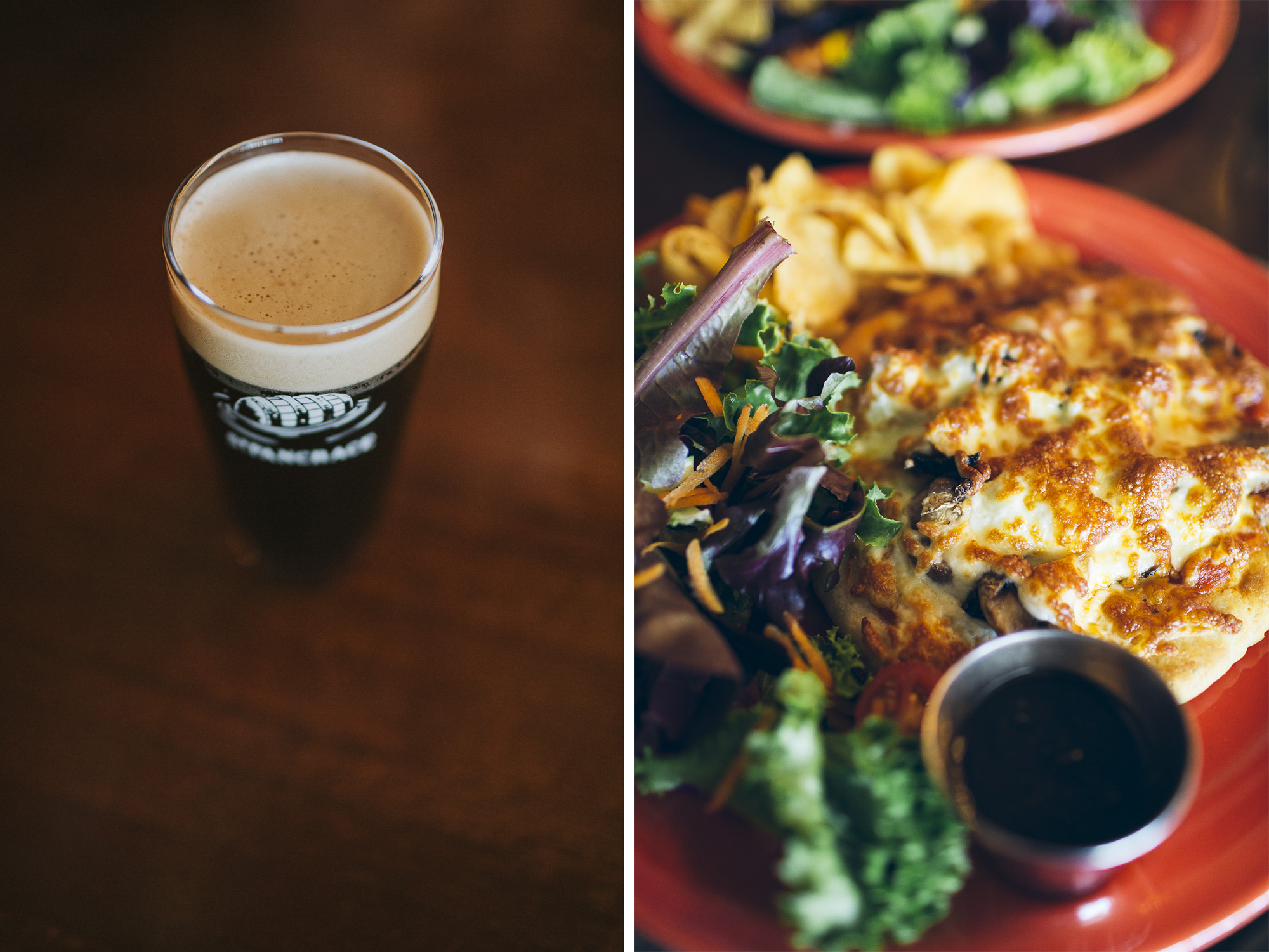

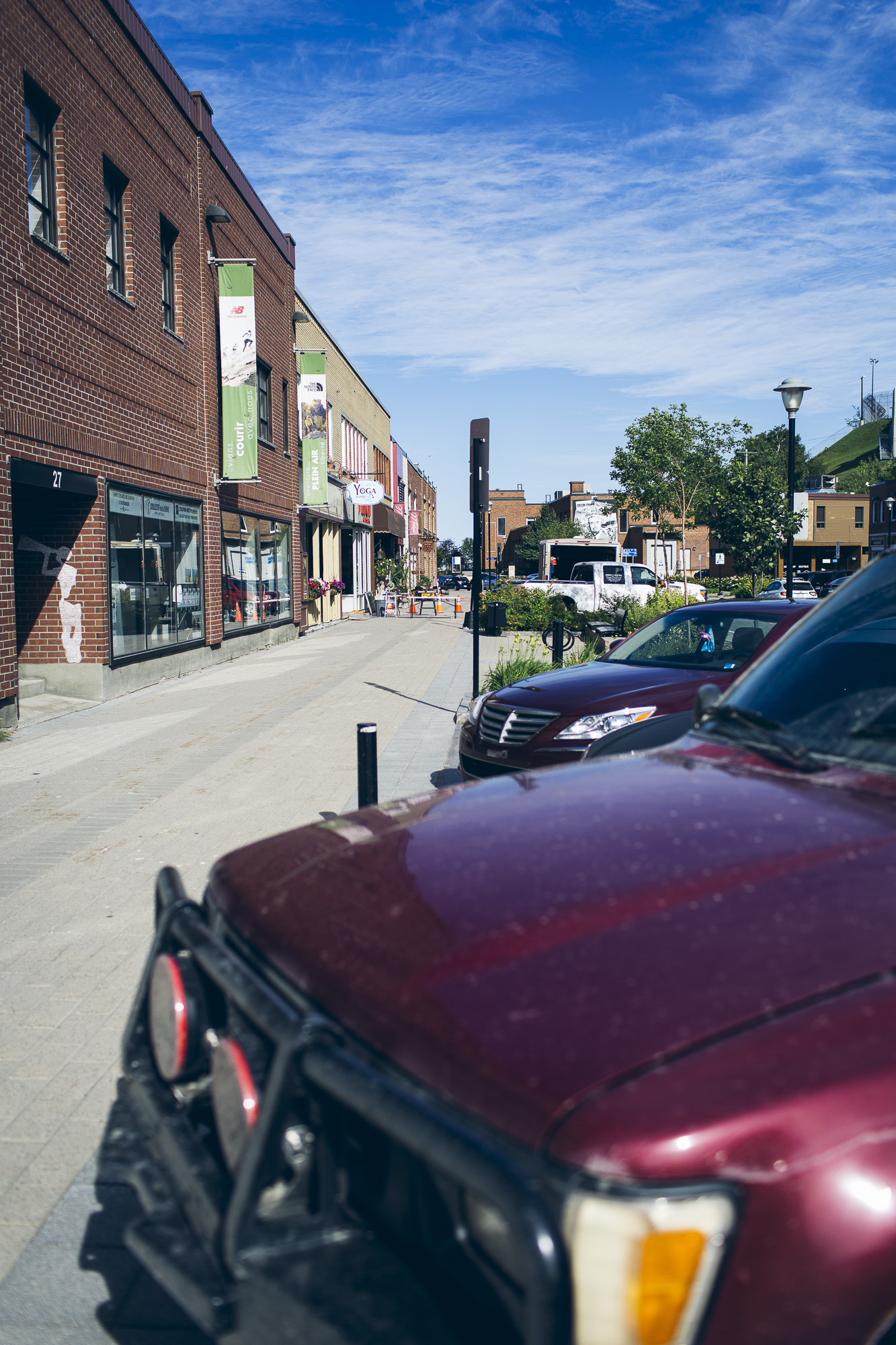
After camping on the side of the road in Labrador, Camping de la Mer was a nice change.
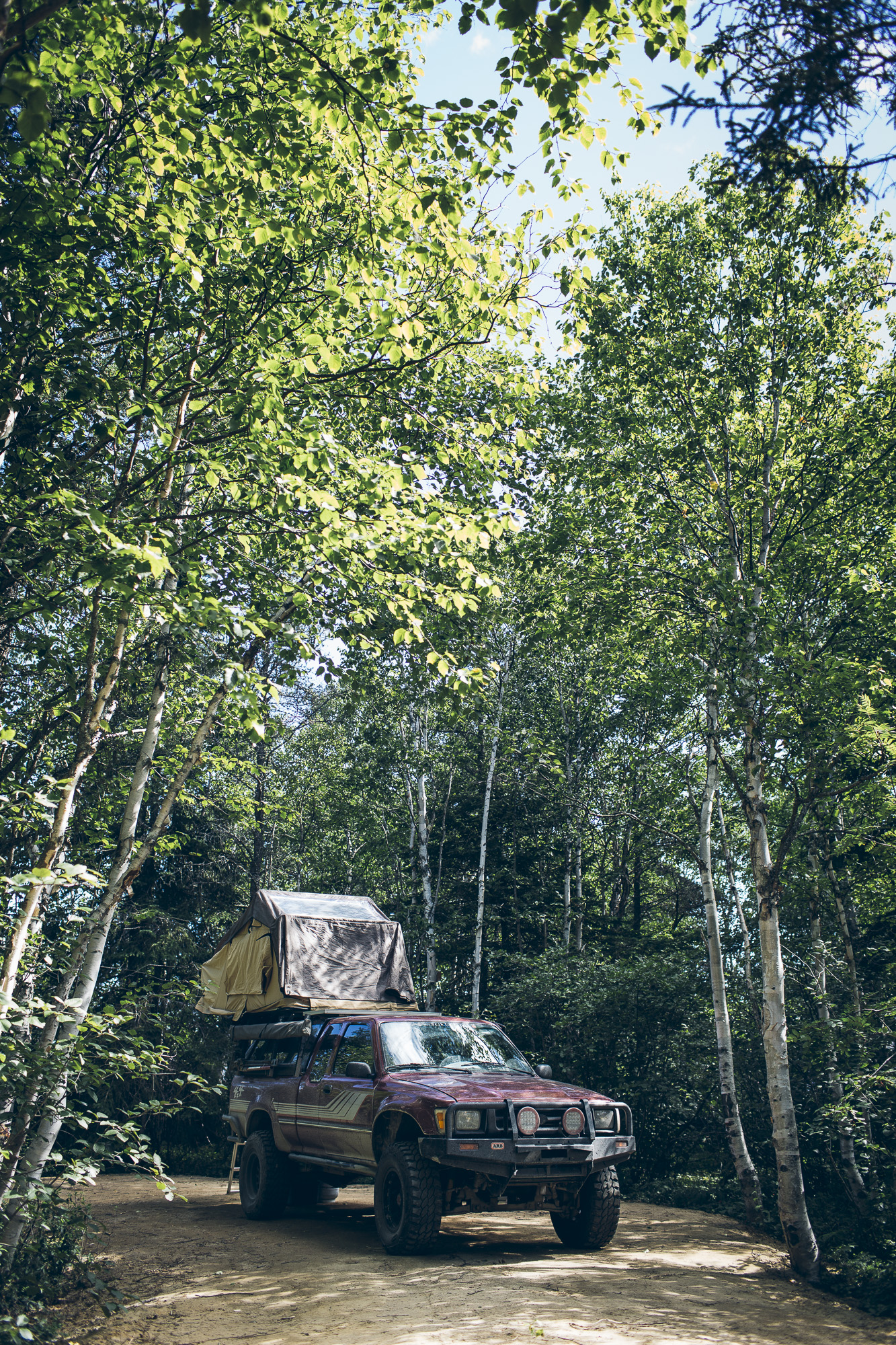
Tadoussac and Charlevoix
As we continued our road trip along the St. Lawrence River towards Québec City, we stopped in the small villages of Tadoussac and Charlevoix.
Founded in 1600, the village of Tadoussac was the first French settlement in North America, a site that was visited by several of the great explorers including Jacques Cartier, Pierre de Chauvin de Tonnetuit and Samuel de Champlain. Given its ideal geographical location, Tadoussac served as a fishing post as well as a hub of the fur trade between Europeans and the Innu.
excerpt from the Québec By the Sea website
Located at confluence of the Saguenay Fjord and the St. Lawrence River, Tadoussac is also a great spot for whale watching.
Try the Croque Madame at Le Cafe Boheme! Similar to the Croque Monsieur, the Croque Madame is essentially a fancy grilled ham and cheese sandwich with béchamel – the only difference is the Madame has a fried or poached egg on top.
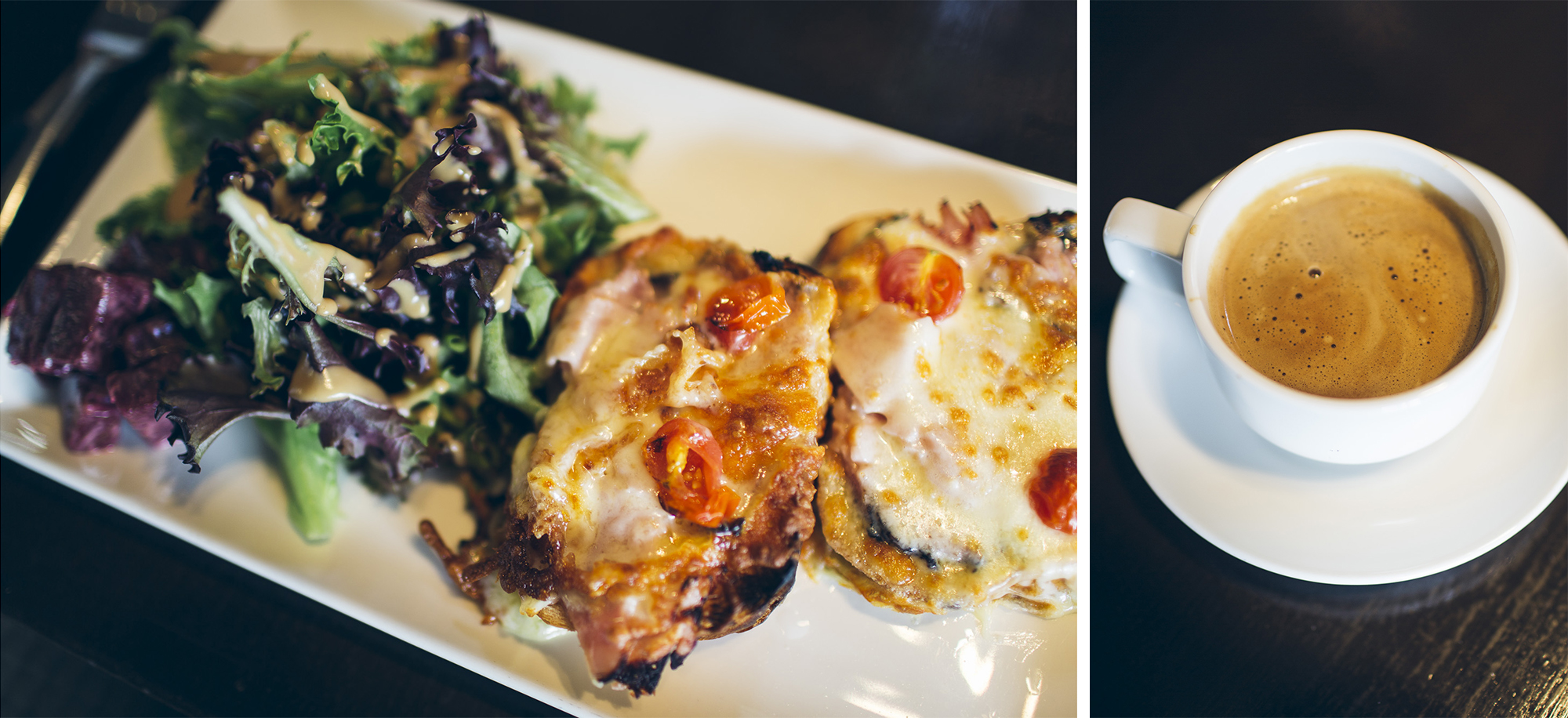

In Charlevoix we paid a visit to the Fairmont Le Manoir Richelieu, walking the grounds and enjoying the view.
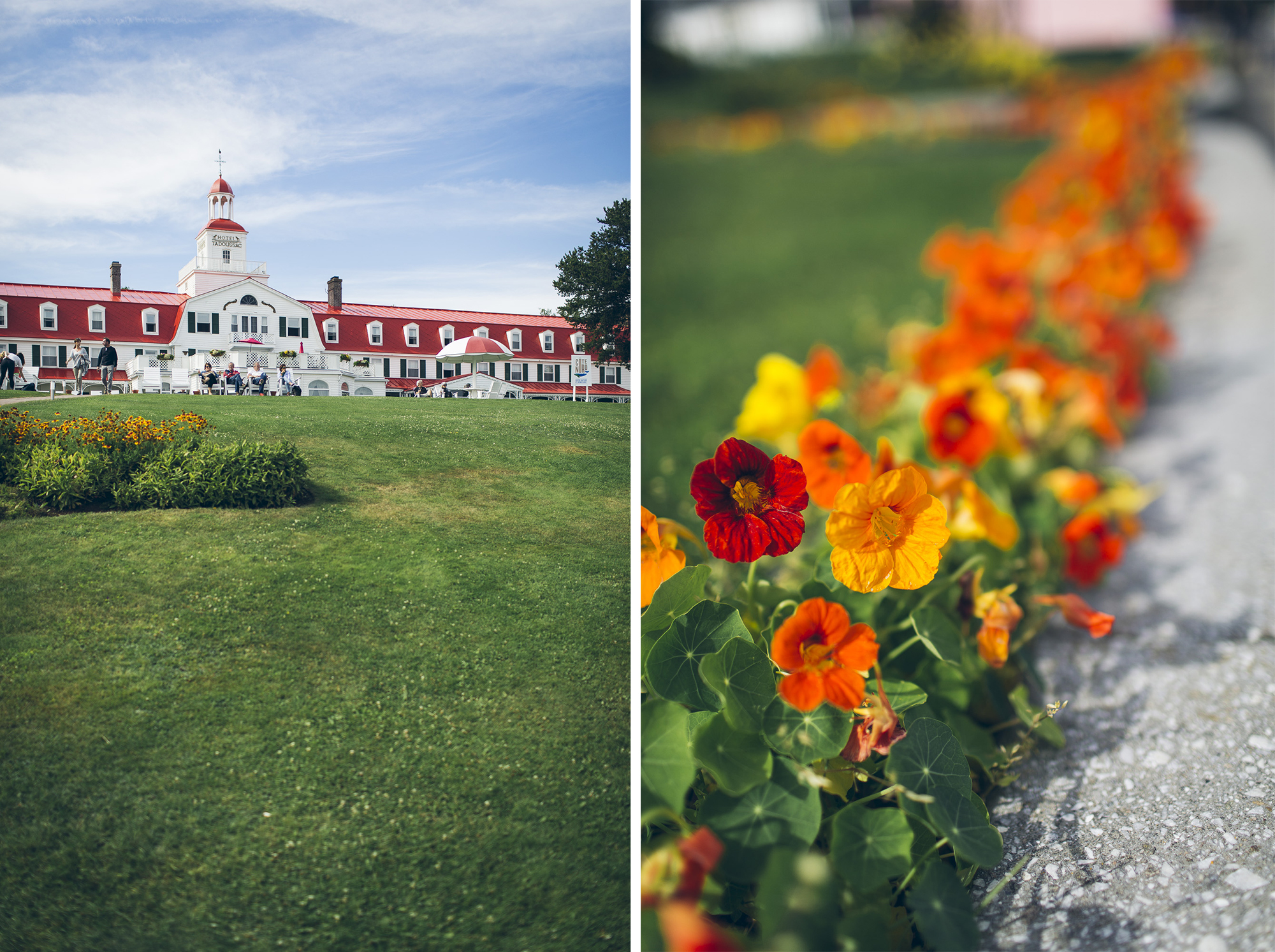

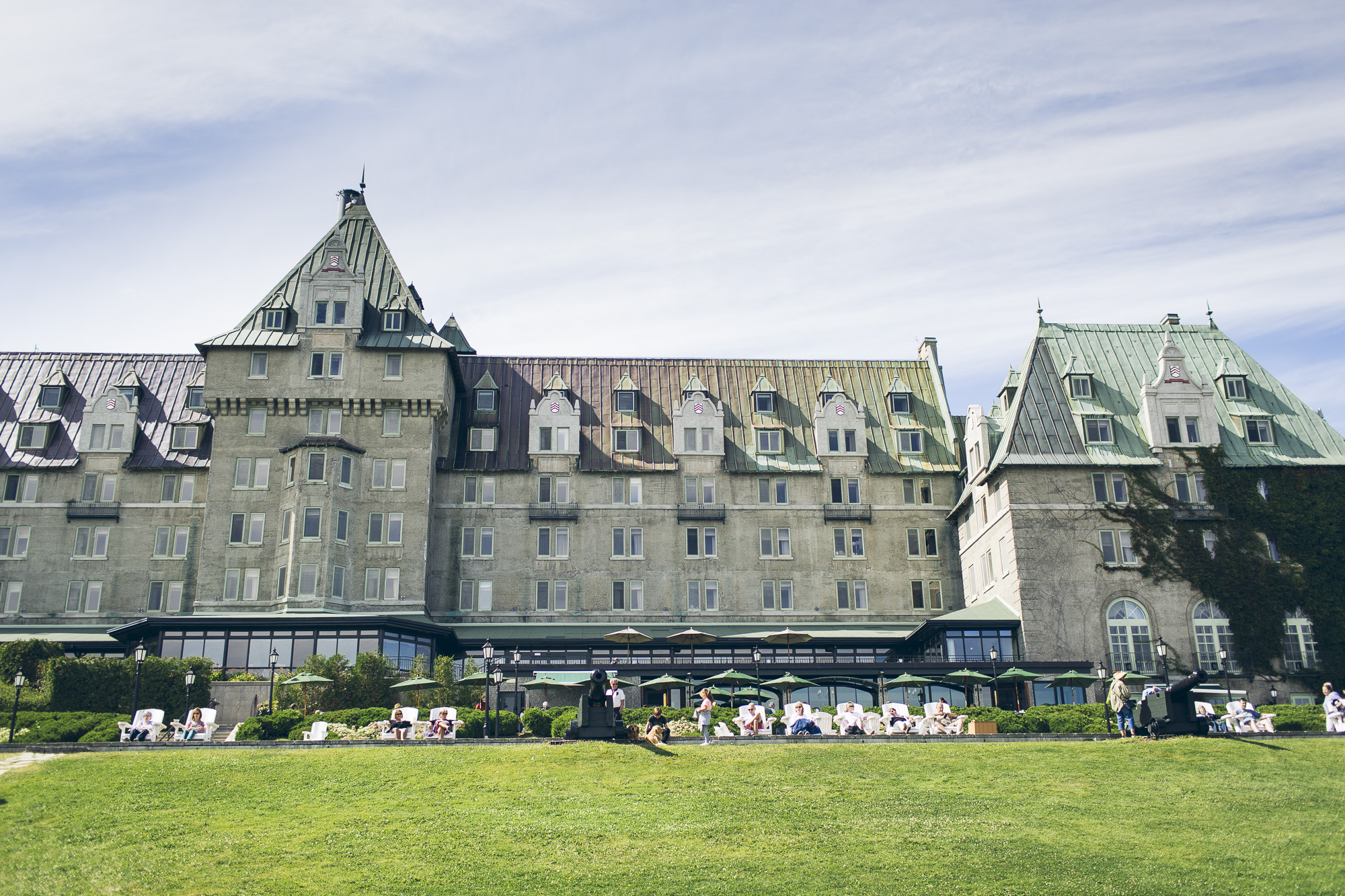
Îsle d’Orléans
Located less than a half-hour drive from Québec City, Îsle d’Orléans is an island located in the middle of the St. Lawrence River and infamous for its agriculture, history and culture. A good friend of ours recommended we visit the area. She knows it well and has traced her familial roots to the island and the exact building that her ancestors lived in following their emigration from France. She isn’t the only one.
To many Québécois, Île d’Orléans has come to represent a cultural hearth, the ancestral home to which they can trace their origins. The entire island stirs powerful emotions for the members of the more than 300 families descending from the original French colonists. Today, many of them come here to recall or discover a part of their personal or collective history.
Îsle d’Orléans Tourism Website
The island is also well known for its food production – we found fresh produce, honey, maple products, dairy products and poultry in markets all over the province. Visitors stop at orchards for fruit picking and vineyards for wine tasting. Agritourism is well established and tourists can embark on a variety of driving tours. We used this map to decide where we wanted to stop and explore. The map divides the sights into categories, so you can tailor your road trip to your interests. This Tourist Guide Brochure gives more detail on the local villages, agritourism, lodging and attractions.
We fell in love with Québec’s food culture immediately. Everything we purchased was so fresh and delicious! The carton of strawberries we bought tasted unreal – so sweet and ripened to perfection. We noticed a difference even in what people placed in their shopping baskets – a huge variety of simple but fresh and seasonal ingredients. I always wondered what sort of masterpiece my fellow shoppers were about to create in their kitchens back home. Locals respect and appreciate food and quality ingredients – meals weren’t just something to get out of the way so you could move on to more important tasks.
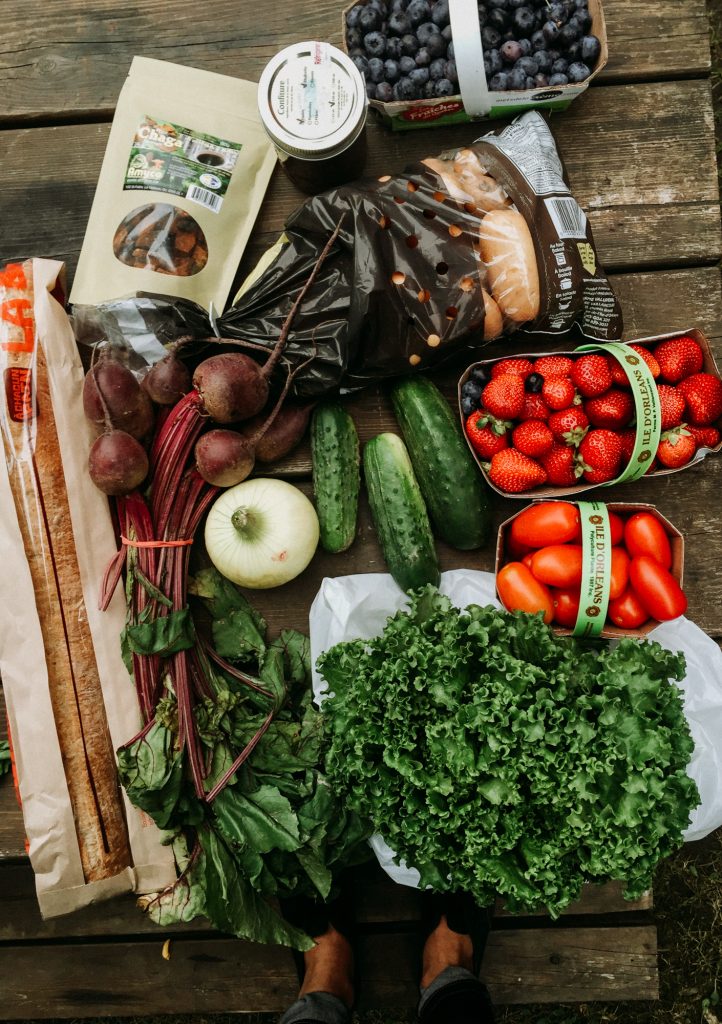


Speaking of food appreciation, we stopped at Chocolaterie de l’Ile d’Orléans because we heard the ice cream was good. So good in fact, that the chocolaterie is one of the most popular spots on the island almost all year-round (winter is the exception).
The Chocolaterie’s dipped cone is made from high-quality imported Belgian chocolate. This rich, hand-crafted chocolate exterior is the prelude to the creamy vanilla ice cream interior, which is also made on site.
Look at this maple-dipped cone. Unreal. Yeah, this cone was a full meal.
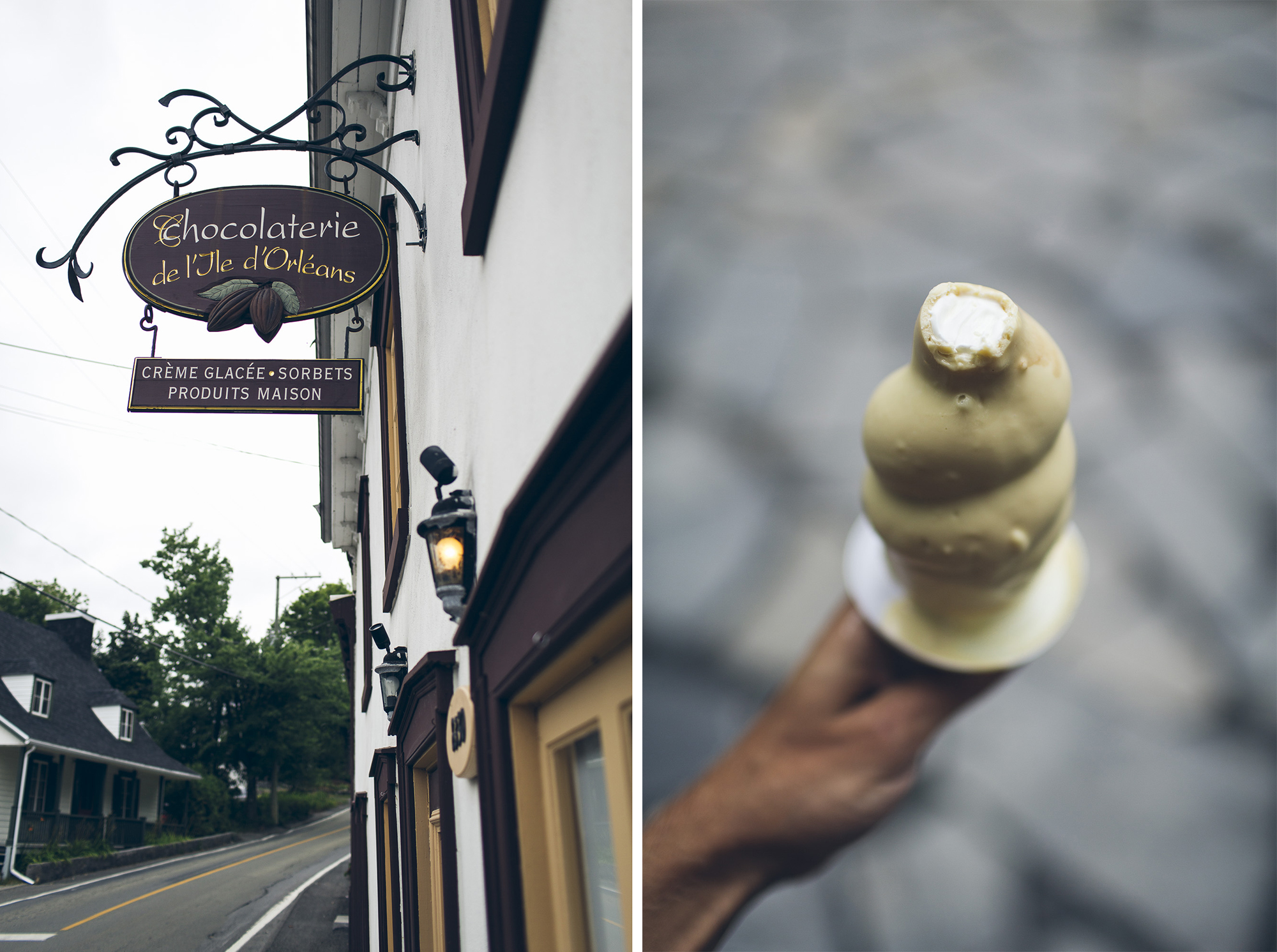
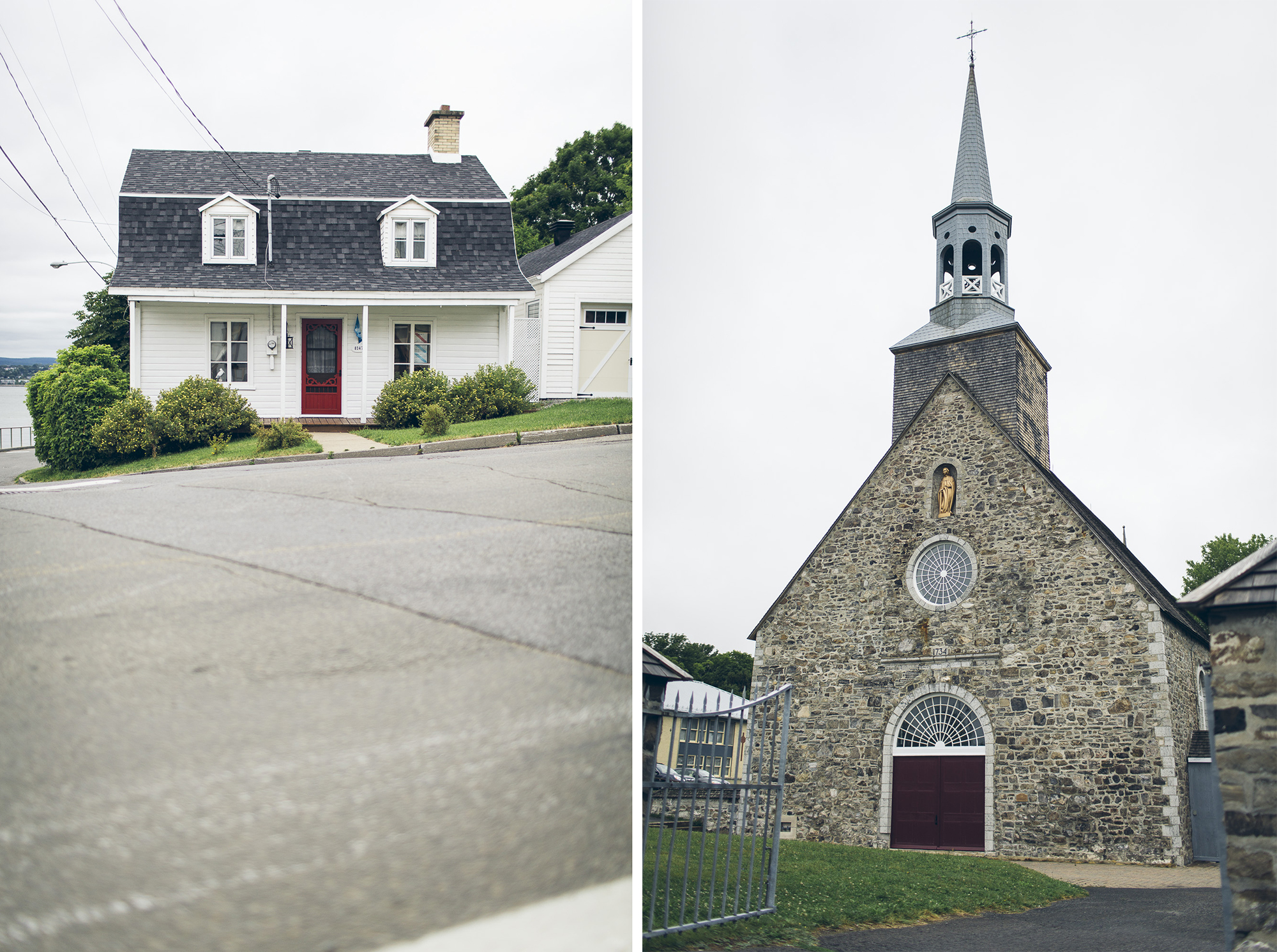
Québec City
We set up camp at the local KOA , a convenient 20-minute drive from the centre of town. Off we went to explore Old Québec, a UNESCO World Heritage site and the only fortified city north of Mexico.
17th and 18th century French architecture. Cobbled streets. Outdoor patios. A mix of the old and the new. Hanging flower baskets and brightly coloured doors surrounded by brick buildings. These were the sights of Old Québec. The city felt markedly different from the eastern Maritime provinces we’d come from.
Here is a great Old Québec City neighbourhood guide, with local tips on what to do, where to sleep, what to eat and with a few reading recommendations: https://urbanguidequebec.com/old-quebec-city-neighbourhood-guide/.

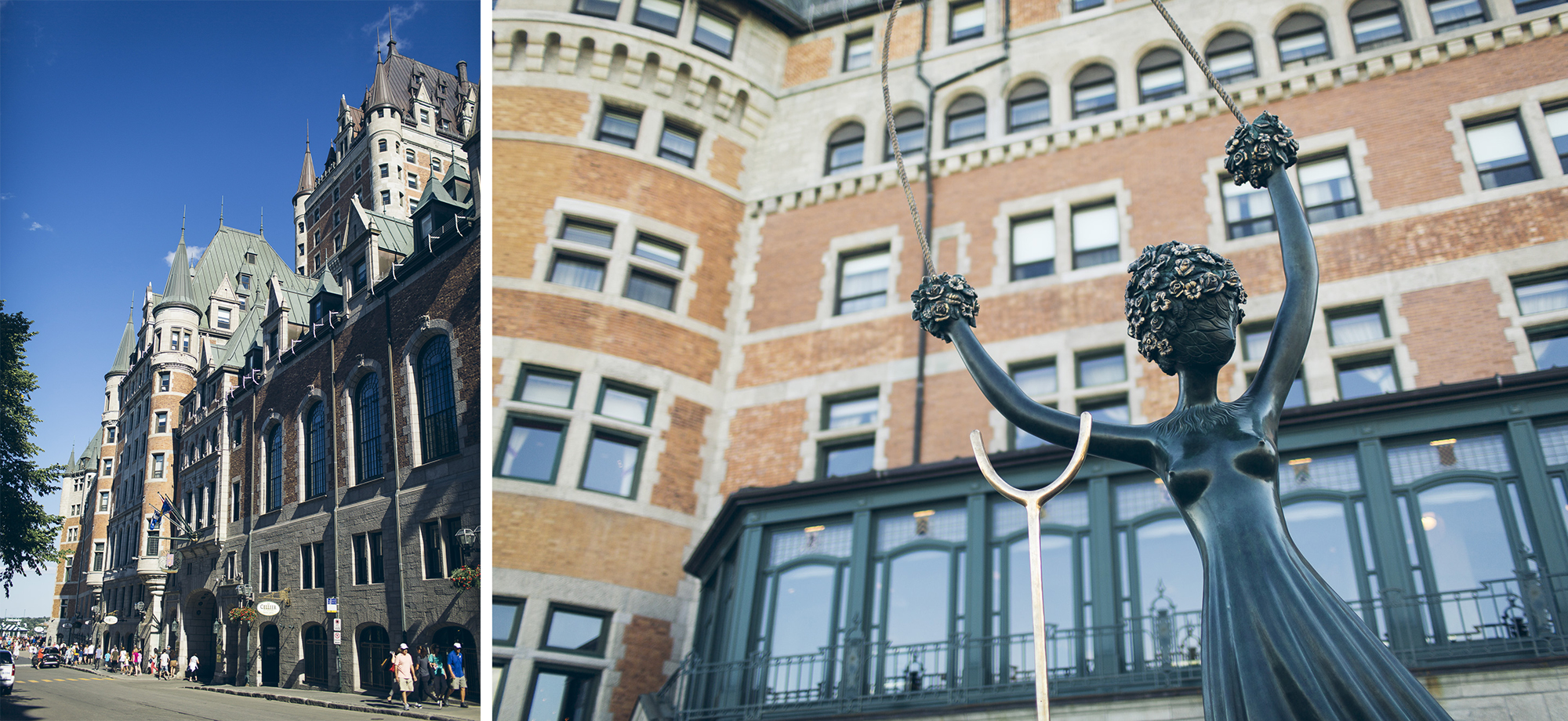

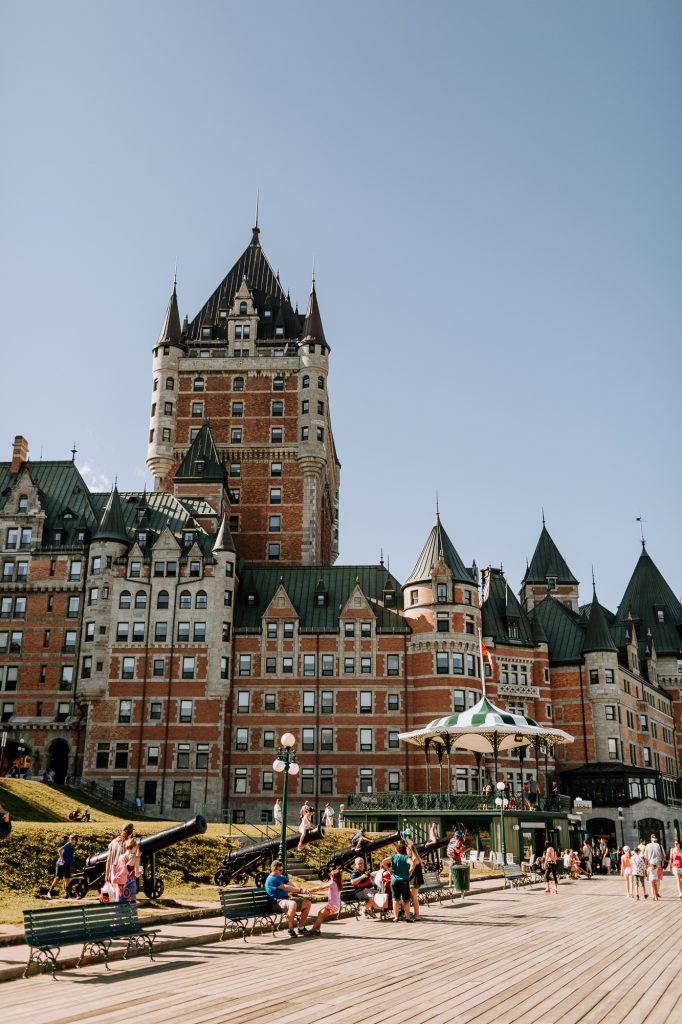
Constructed in 1892, the cliffside Château Frontenac overlooks the St. Lawrence River and the Dufferin Terrace, a 425 metre long wooden walkway originating at the city’s citadel (La Citadelle de Québec). The hotel’s design was derived from the medieval chateaux of France’s Loire Valley, and was built by the Canadian Pacific Railway.
The Château Frontenac was the first of a series of Chateau-style hotels built by Canadian railway companies in the late 19th and early 20th centuries to encourage tourists to travel on their railways. Popular with the travelling public for their elaborate décor and comfortable elegance, these hotels quickly became national symbols of quality accommodation.
The Canadian Register of Historic Places
Place Royale is a charming cobblestone square located in the Lower Town of Québec City. It was here that Samuel de Champlain founded the city in 1608. Place Royale is also home to Notre-Dame-des-Victoires, one of the oldest stone churches in North America, built in 1688.

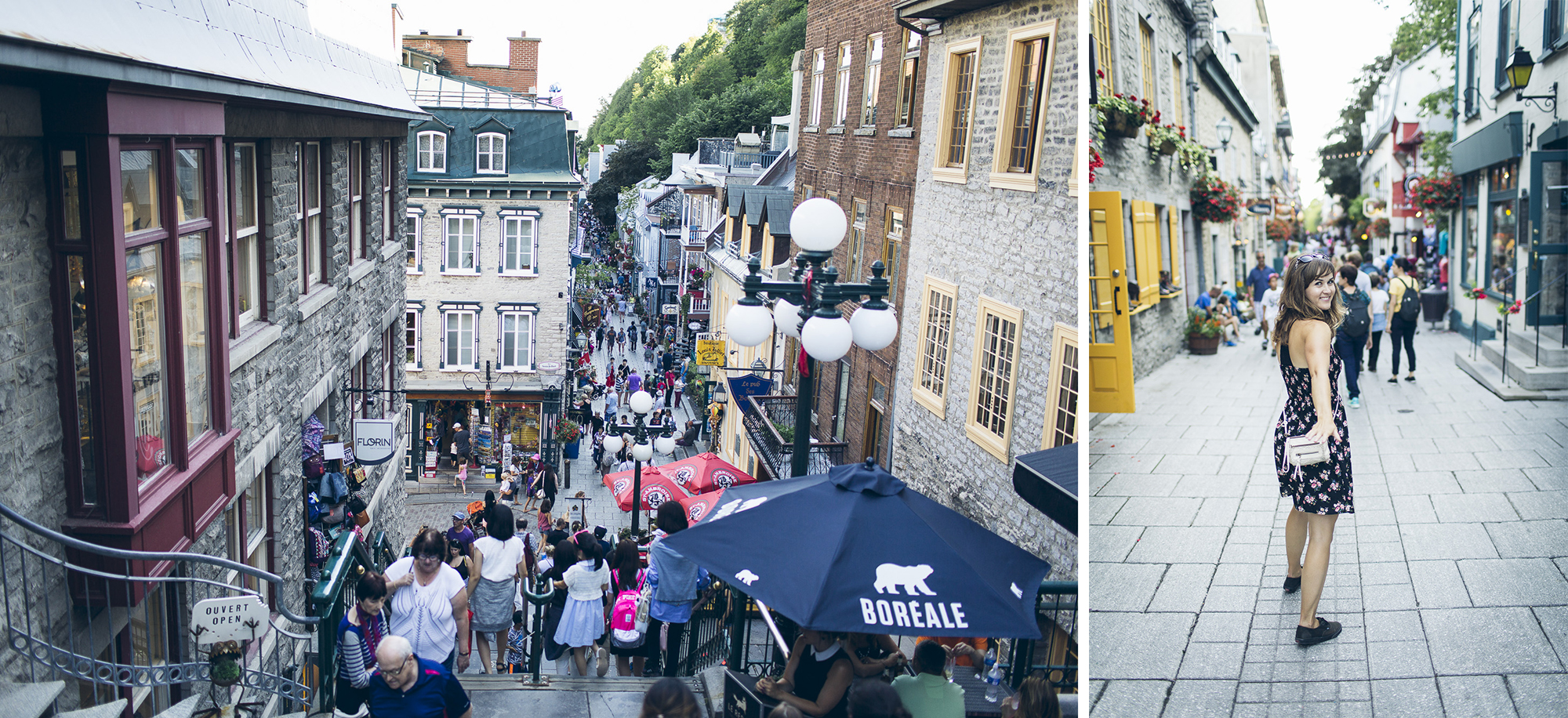
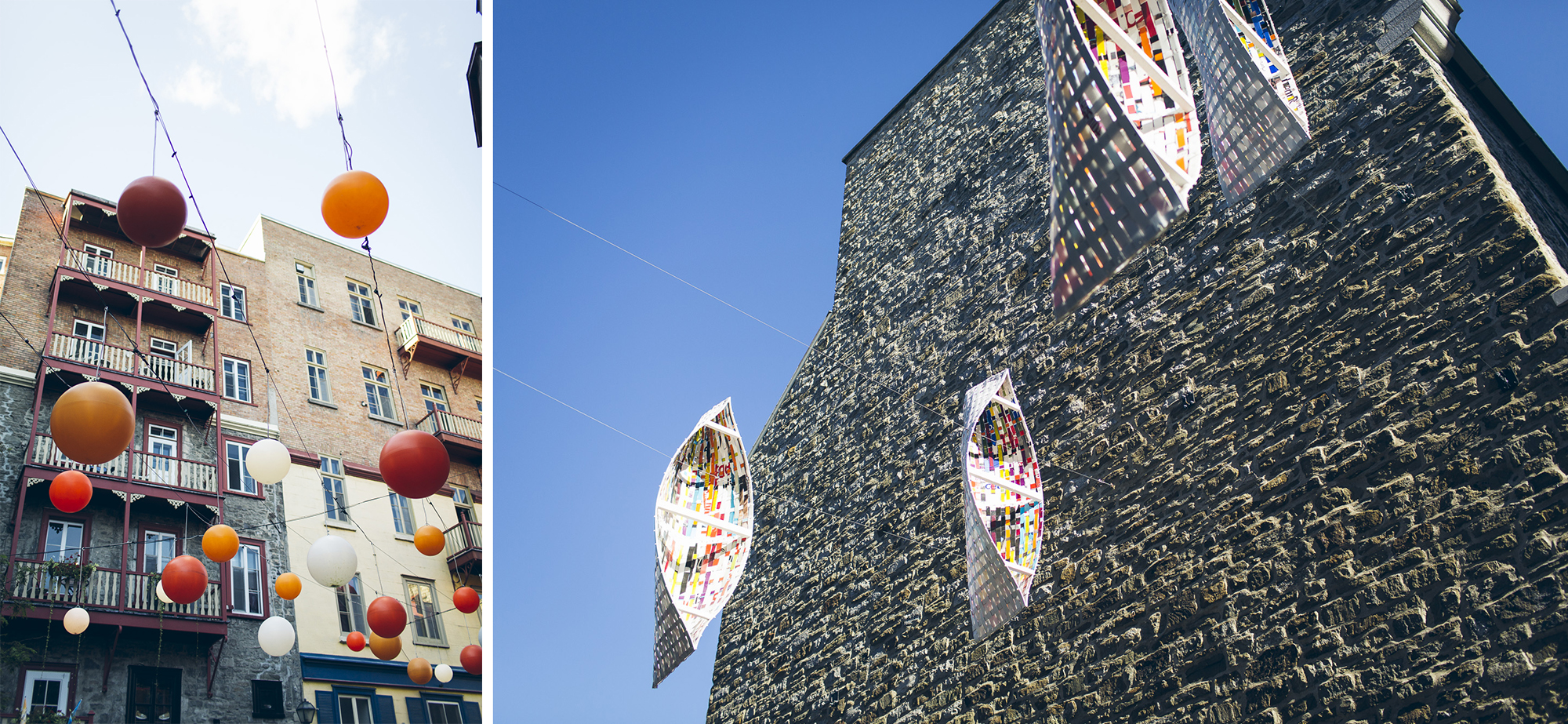
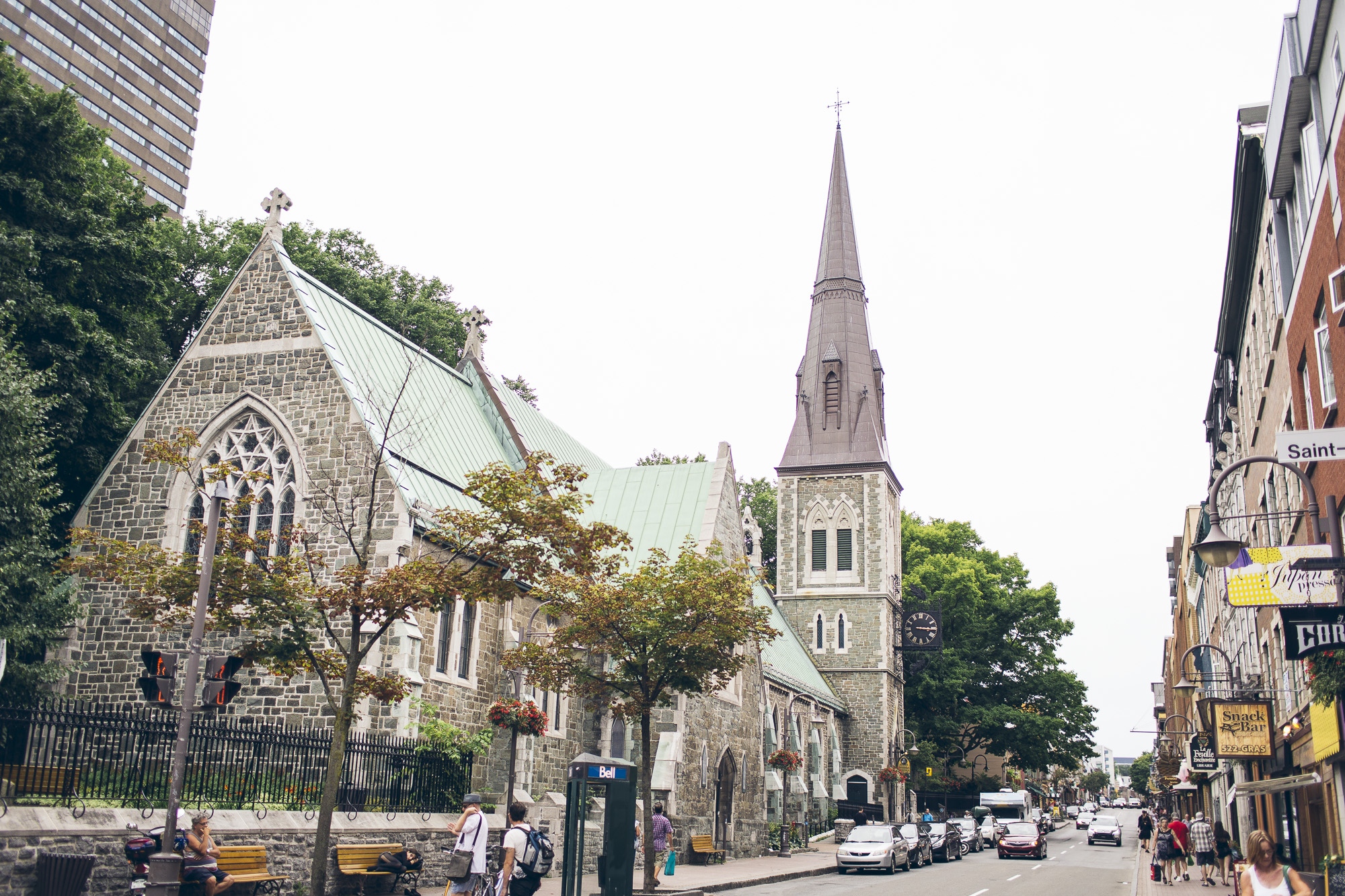
Pub Saint-Patrick – an Irish pub housed in a 200-year-old building in Old Québec City. We dined in the underground cellar, with walls so thick that our cell phones couldn’t pick up a signal.

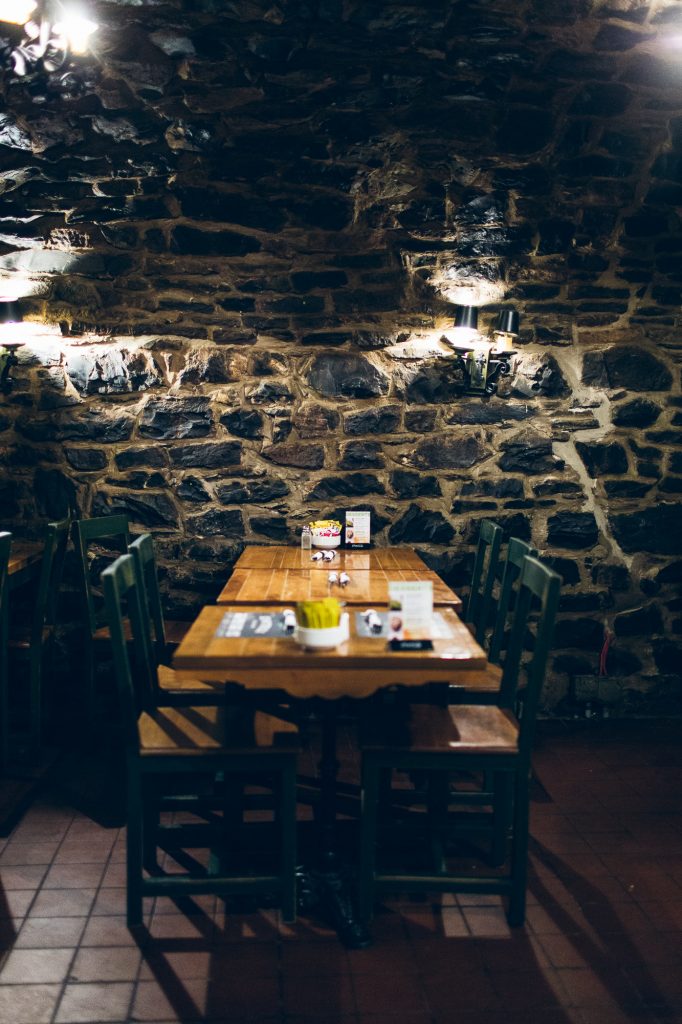

Although we really enjoyed Québec City, we didn’t spend nearly enough time there. I would love to return and really get to know it better, deep diving into the history, architecture and food scene. A visit in the wintertime sounds magical.
Montréal
The first time we visited Montréal was kind of weird.
We were on a long layover to (or from?) Santiago the previous February and decided to free ourselves from the airport and explore. A city bus ride took us downtown, where it was snowing heavily. It must have been a Sunday because the streets were deserted and most of the shops were closed. We dashed into Reuben’s Deli, a recommendation from someone at the airport, and warmed our hands over a cup of diner coffee. After wandering through the Les Cours Mont-Royal Mall and a random Barbie exhibit, we trudged through the snow once more and bussed it back to the airport.
Our second visit to Montréal was NOTHING like this. First off, it was summer and our small AirBnB apartment reflected the hot and humid temperatures. The city was hustling and bustling with people of all different ages, ethnicities, cultures and fashion statements. People from Montréal are enviably cool. Everyone was rocking such unique clothing styles – everything from punk to hipster. It was such a departure from the identically Lululemon-clad Vancouverites, and I loved it. The subway was a great way to explore different neighbourhoods and do some serious people watching.
We embarked on an Anthony Bourdain foodie tour with our newfound friends from Instagram, Mathieu and Shoreh (who are currently overlanding Europe in their Chevy Roadtrek Campervan!), starting with a coffee at Café Club Social in the Mile End neighbourhood. A frequently visited spot by Montréal’s Italian community (and for good reason!), the tree-lined terrace out back, the soccer posters and flags, and the on-point lattes make this a place we’re itching to go back to. Don’t forget to skip across the street and grab a bag of bagels from the St- Viateur Bagel Shop.
Once we worked up an appetite again we made our way to Schwartz’s Deli. Here’s your classic Montréal smoked meat sandwich, served by the oldest deli in Canada.

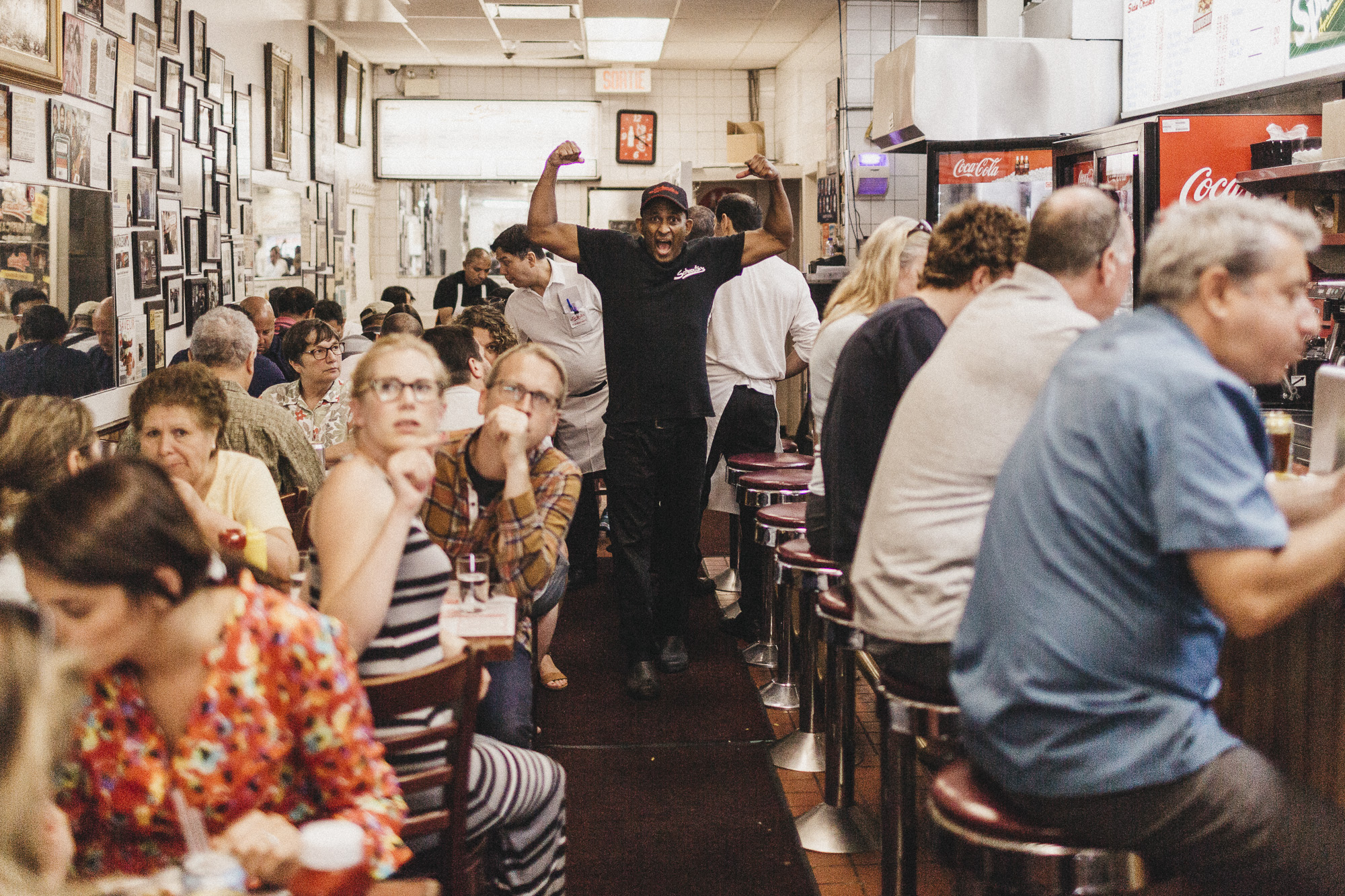
In 1928 a Romanian immigrant named Reuben Schwartz, opened a deli then-called the Montreal Hebrew Delicatessen. We now know the deli as Schwartz’s, where people from all over the world gather to dine – usually on the Smoked Meat Sandwich.
This is kosher-style meat with no preservatives, and the preparation is as follows: the beef must come from a specific part of the animal – brisket or lower breast meat. It is then cured for 10 to 12 days in Schwartz’s own spice mixture (usually salt, coriander, black pepper, garlic, some sugar, etc.). The pieces are then smoked for 8 to 9 hours in Schwartz’s own brick smokehouse – with its own 90 years of aromas – then steamed for 3 hours. After this lengthy process, the meat is then sliced and ready to eat.
Tastet – Schwartz’s : Montreal’s most famous deli
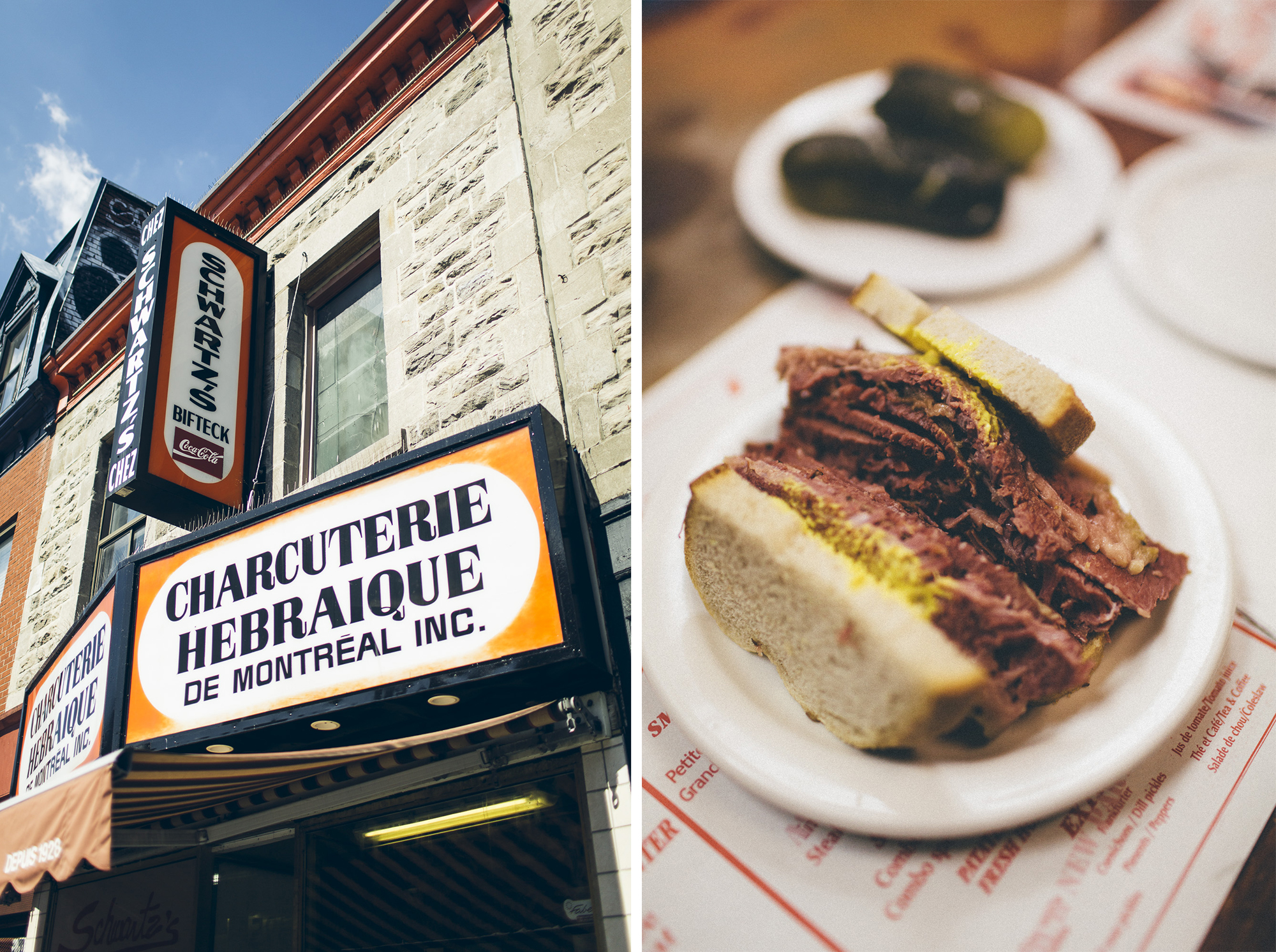
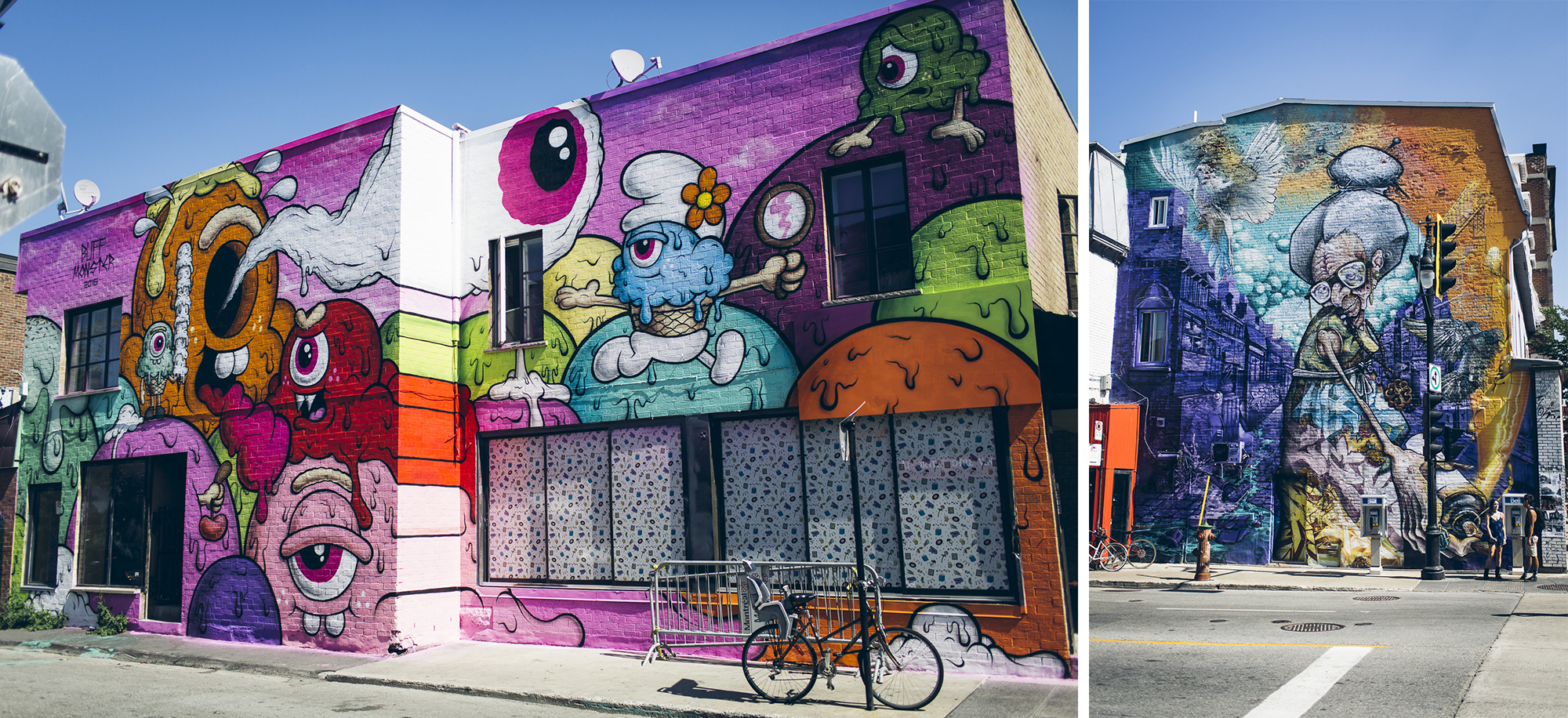

We hiked up Mount Royal via Parc du Mont-Royal to take in the view of downtown Montreal from above.
Pop inside the Mount Royal Chalet while you’re at the top to see the 32 wood squirrel sculptures in the rafters, grab a snack from the café, or visit the gift shop. The Chalet itself is quite impressive and was constructed in 1932, with the intent of offsetting unemployment during the Great Depression.
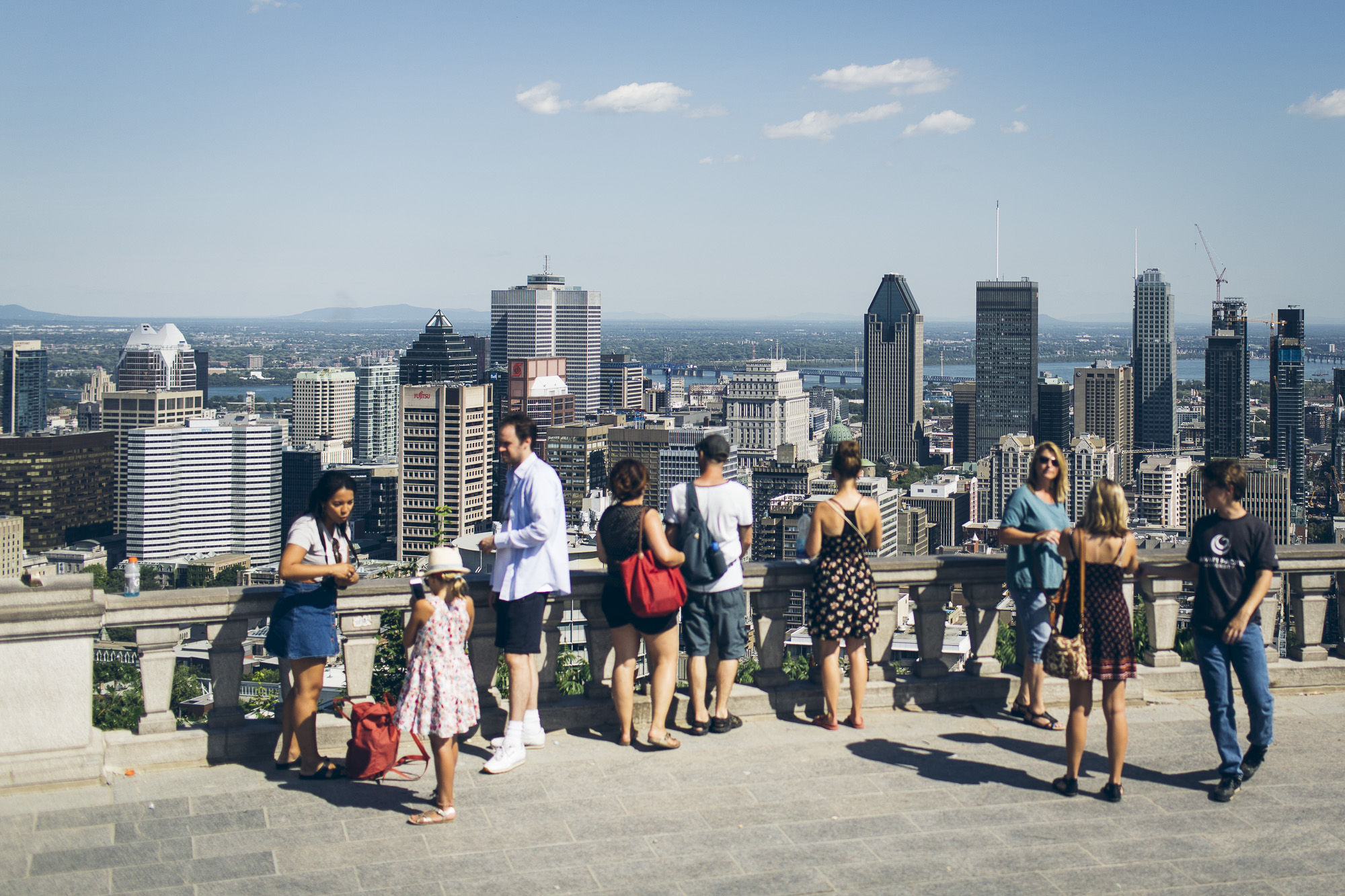
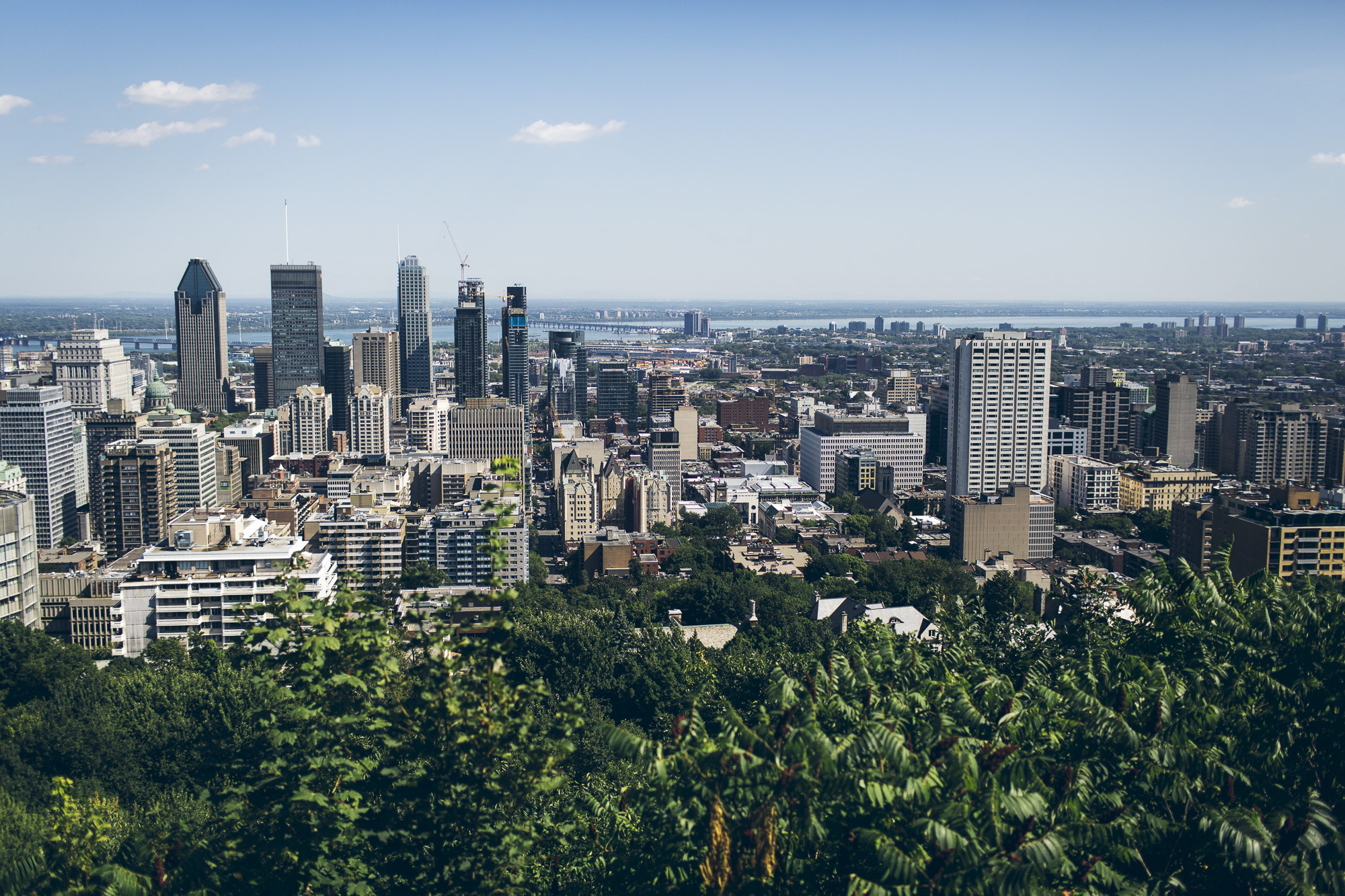
There was one last (but very important) thing we needed to do before we left Montréal.
poutine n. French-Canadian dish traditionally made of French fries and fresh cheese curds, covered with gravy.
A visit to La Banquise was in order! We continued our Anthony Bourdain food tour, attempting to decide on a poutine dish out of the 30 listed on La Banquise’s menu. Interesting variations included La Taquise – poutine with guacamole, sour cream and tomatoes. Fortunately Mathieu and Shoreh were well versed in poutine ordering, so we kept it simple with La Classique.

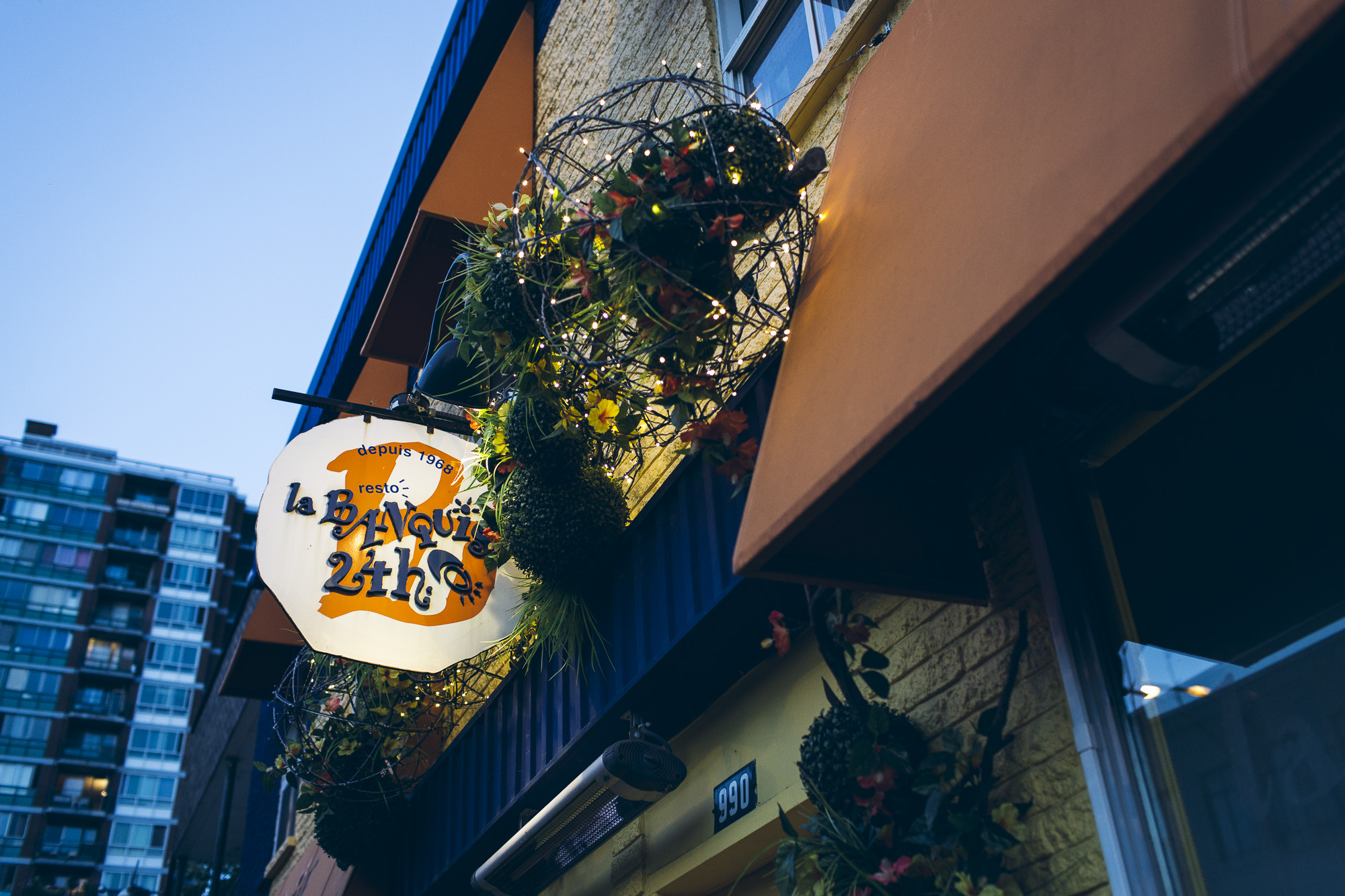
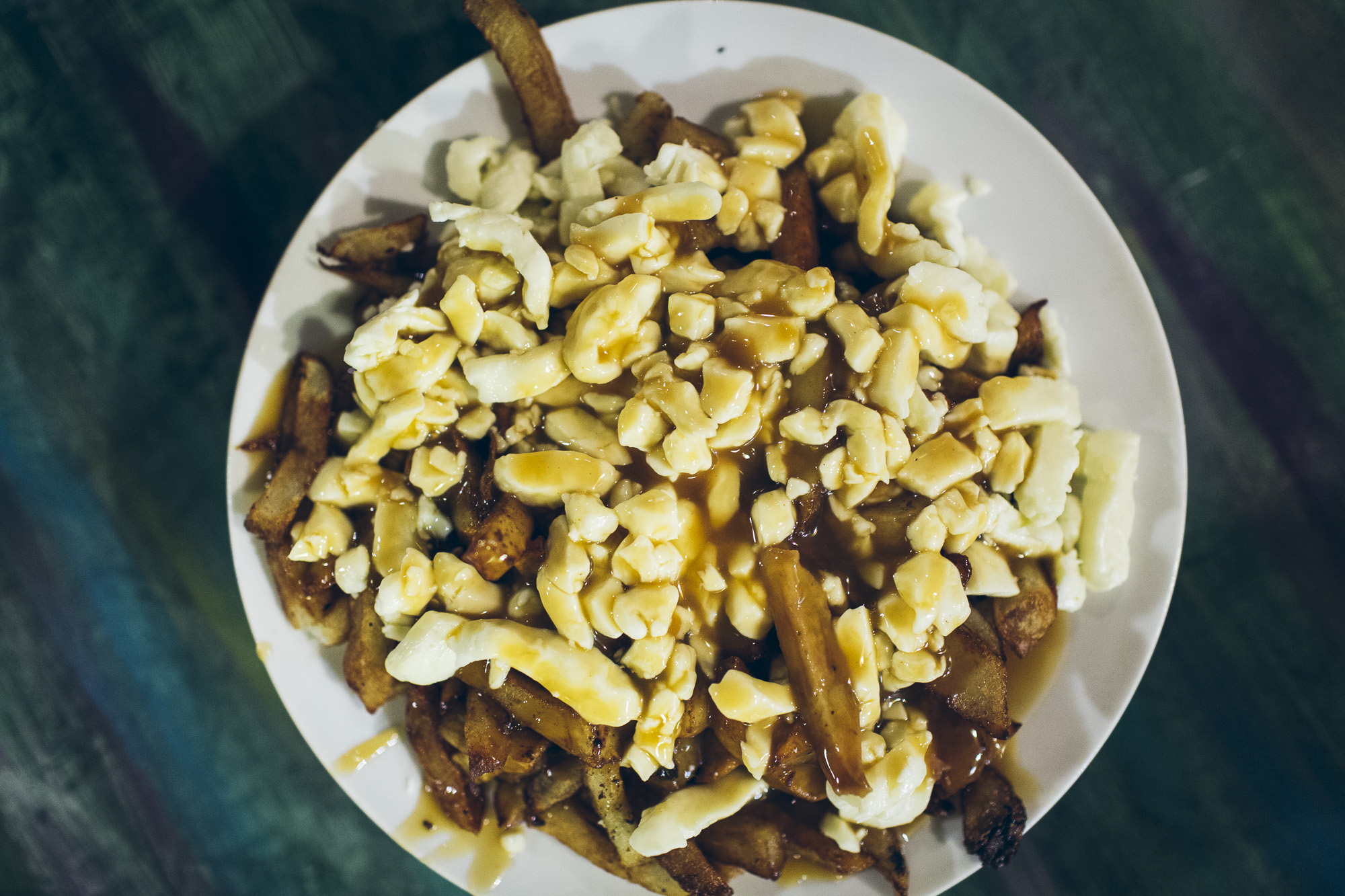
We regrettably said goodbye to our friends and au revoir to Québec. After a wonderful road trip through this unique province, we needed to get to Toronto ASAP. Our truck, Little Red, was in dire need of a mechanic shop. Little did we know that things were about to get busted up.
Planning a trip to Québec, Canada?
Click below to pin to your Pinterest Travel Board!
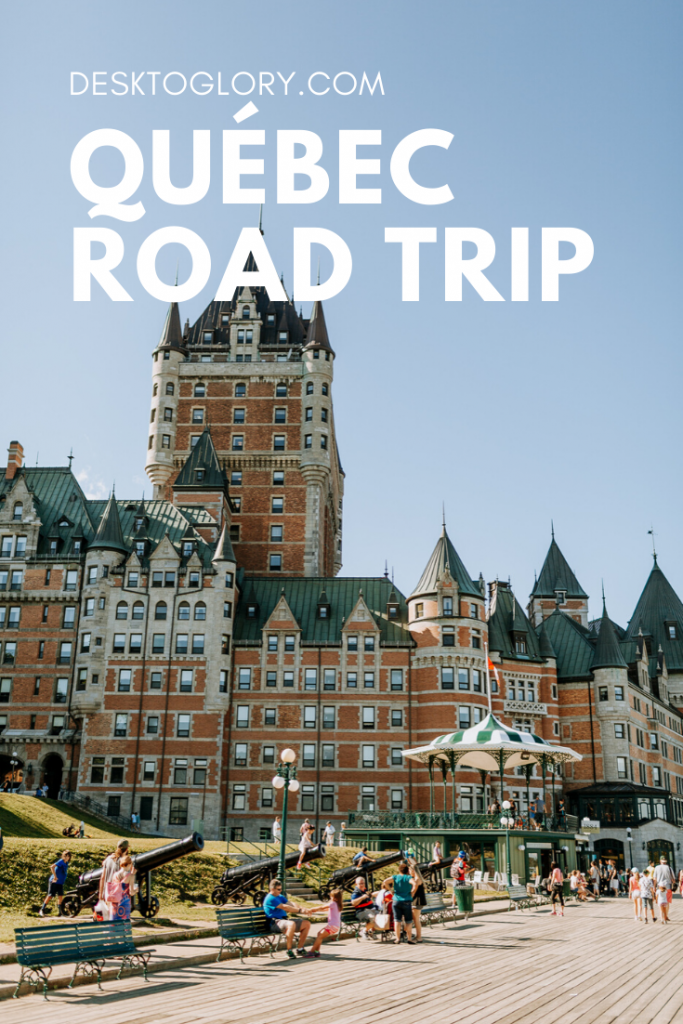


It was a pleasure helping you tour our beautiful city. We hope to see you again soon. Maybe on the road?!? Safe travels!
So happy that you enjoyed your trip in Québec! It was a pleasure giving you a tour of our beautiful city!
Pingback: A Busted Axle and a Dream Come True - Desk To Glory